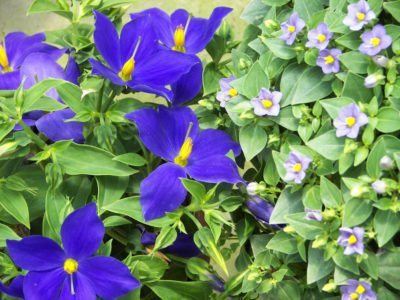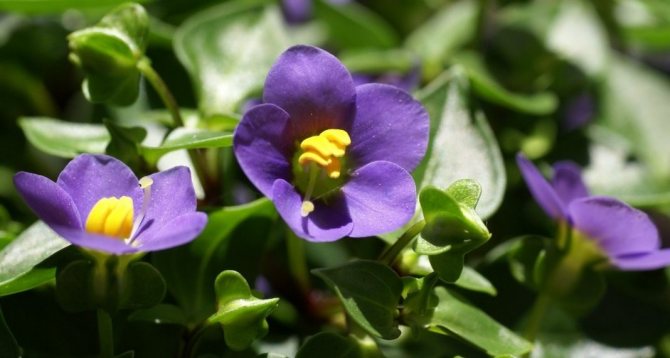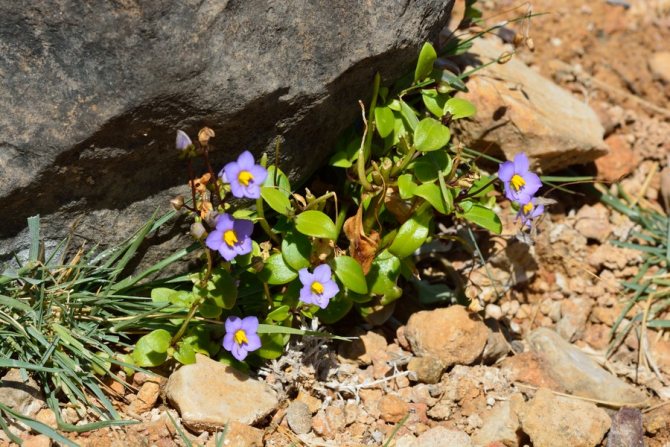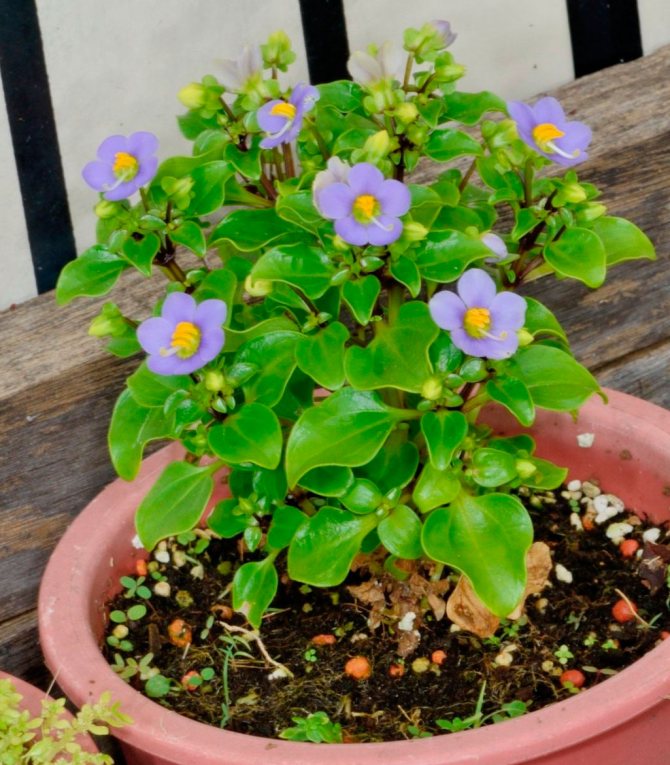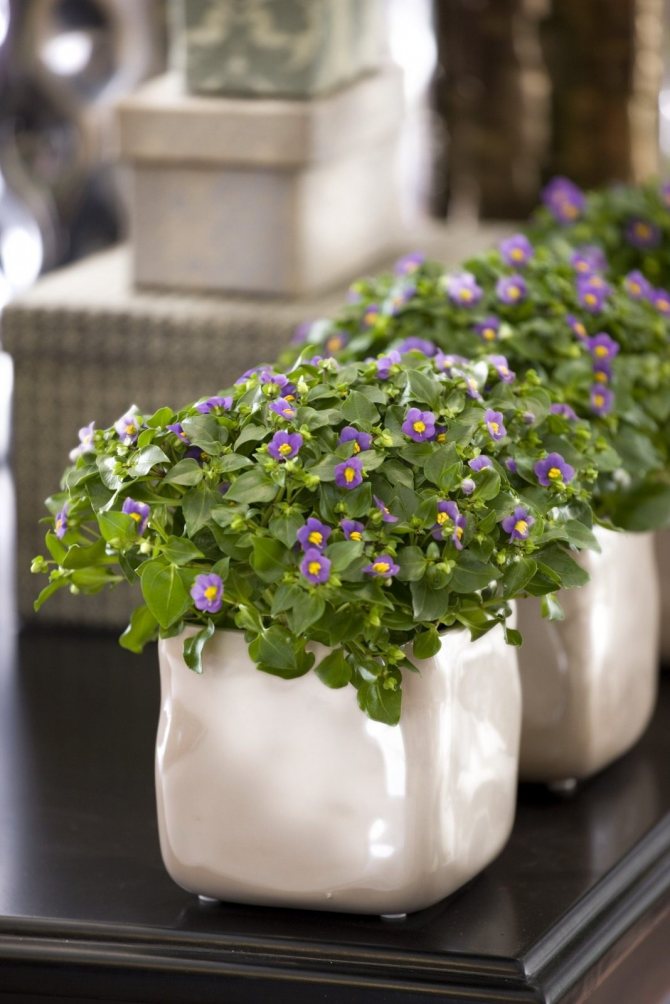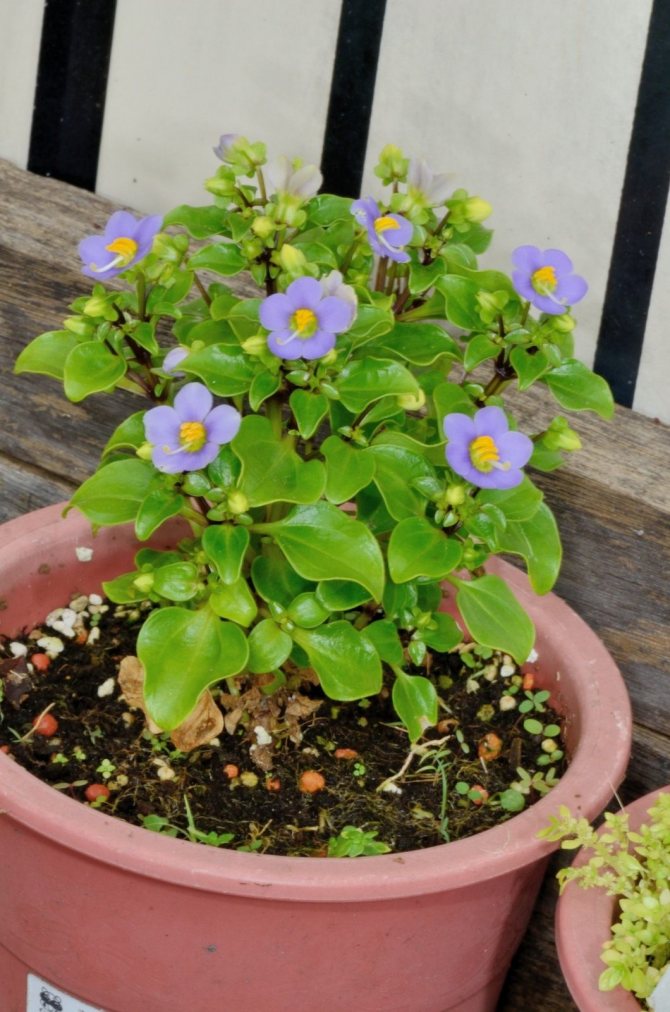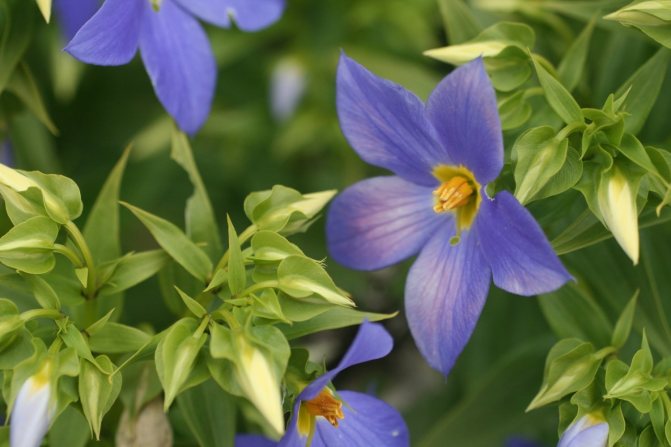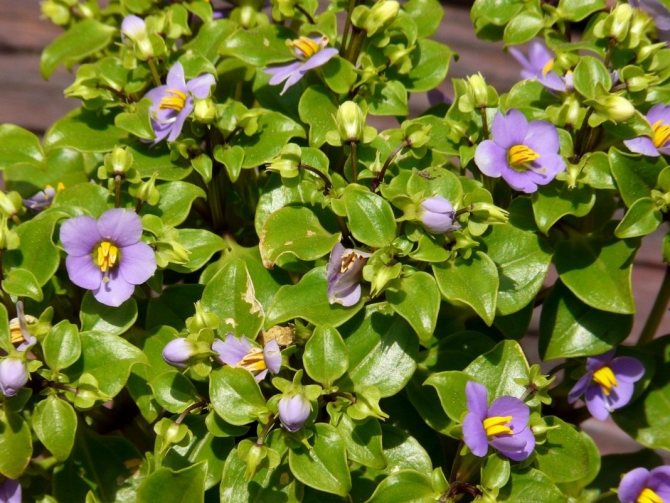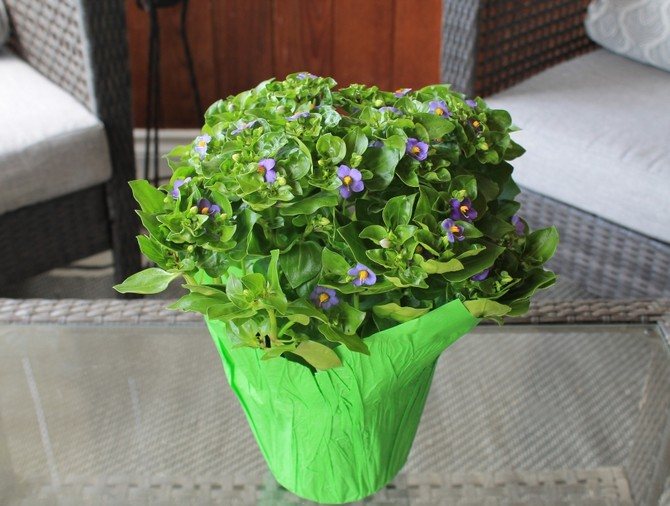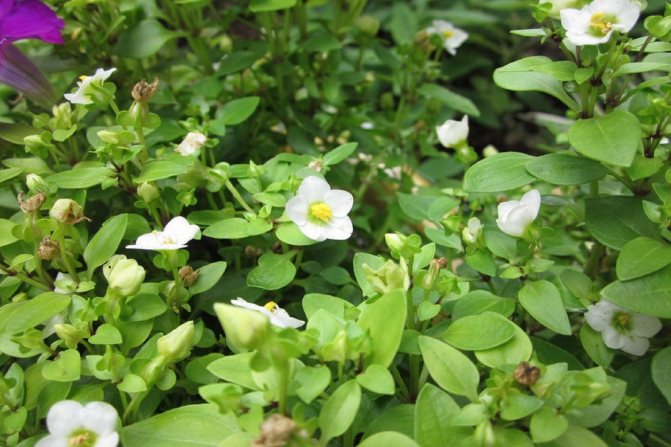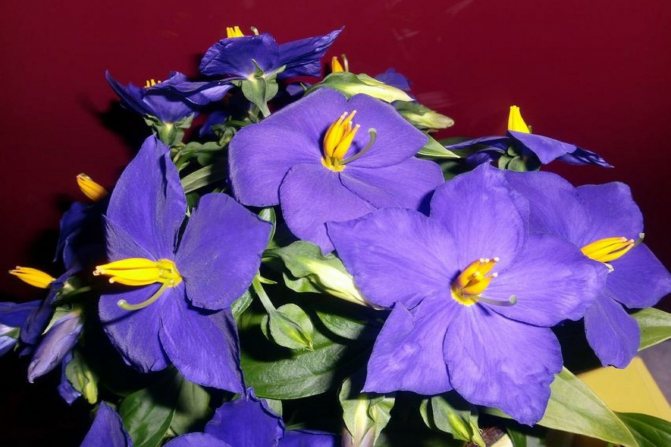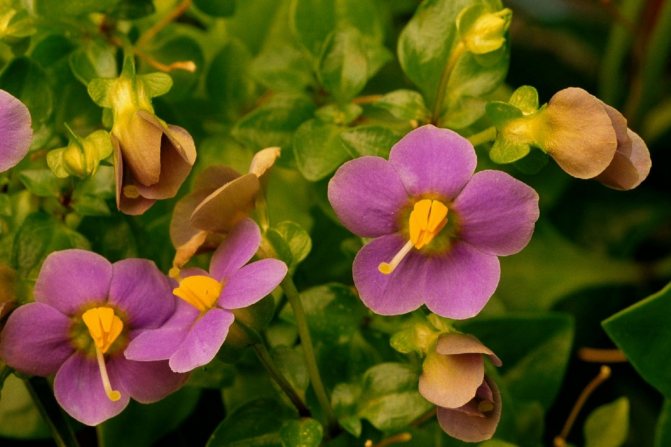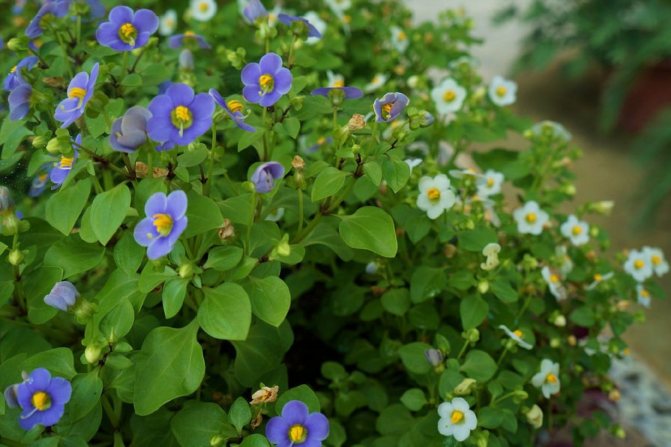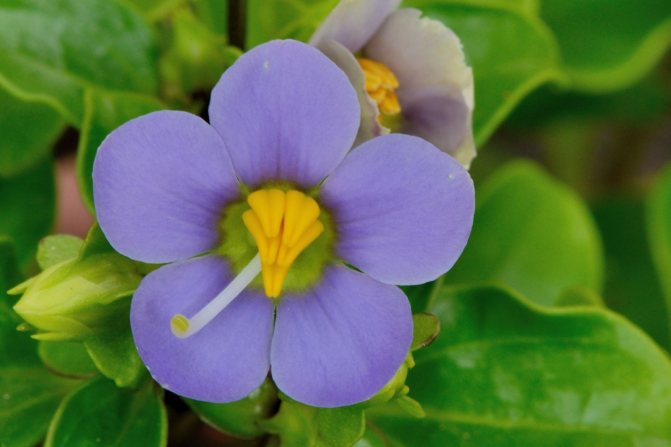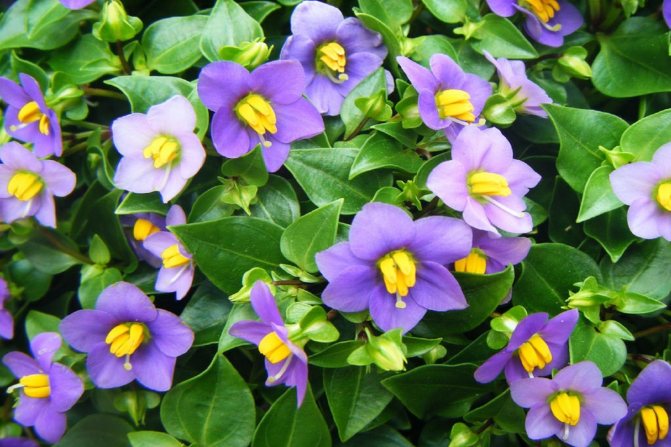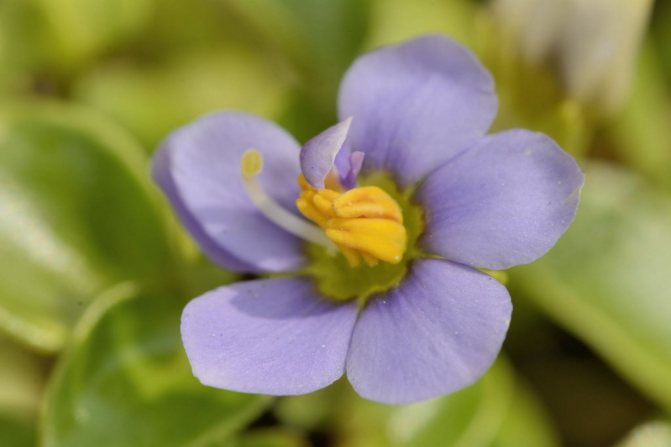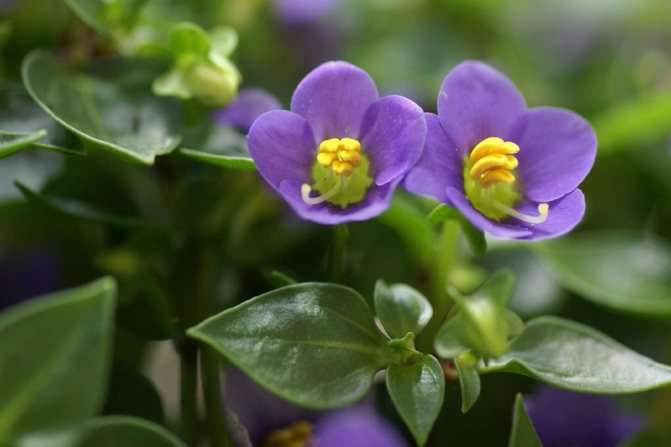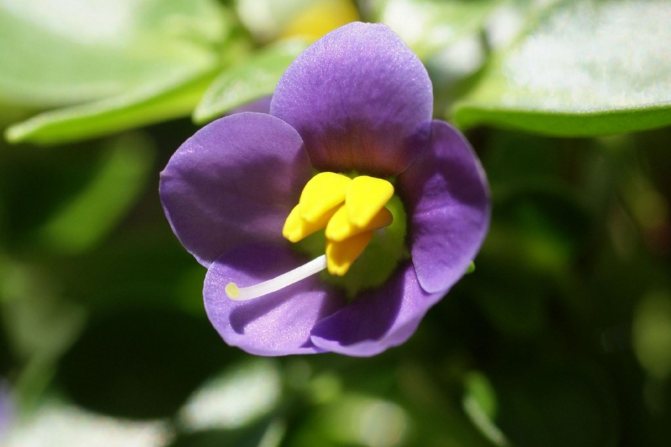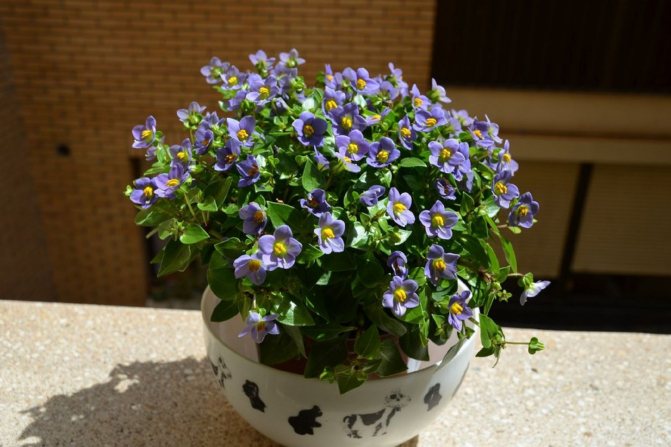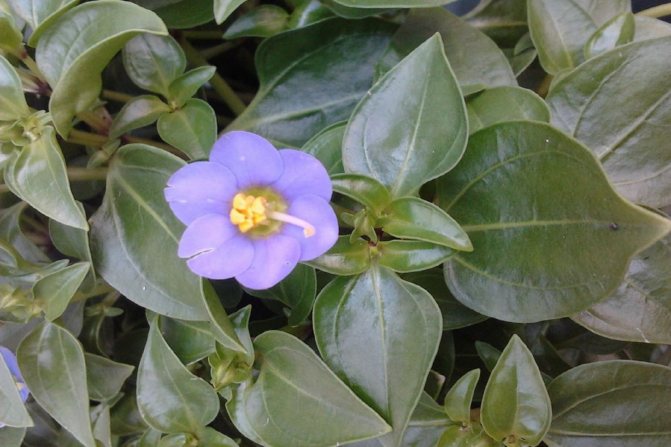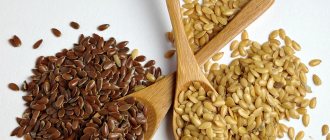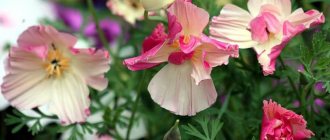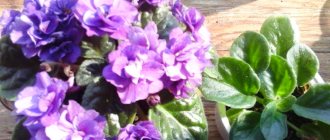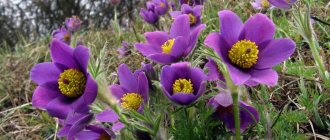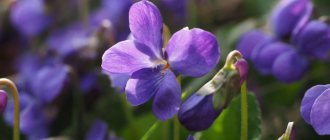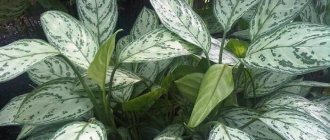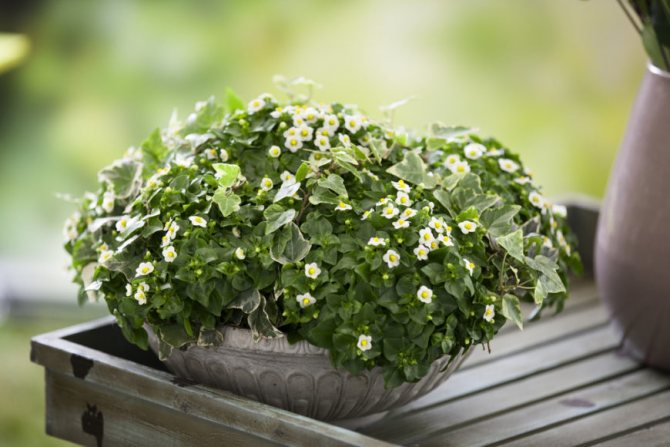
Origin: Malaysia, Southeast Asia Humidity: Maintain regular watering Location: Sunny, shaded Soil: Light neutral soil. Perlite and peat moss are encouraged Growth height: 20-30 cm Flowering: May-August
Exacum is a genus of the Gentianaceae family.
Exakum care at home
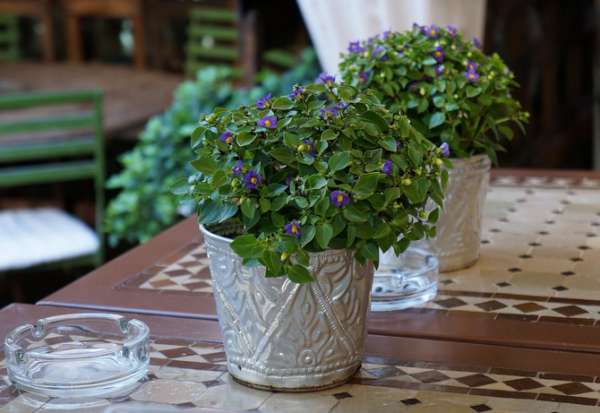

Location and lighting
Since the exacum plant is light-loving, direct sunlight is not dangerous for it. The only exceptions are hot summer days, when the midday sun can still burn the plant. Therefore, during this period it does not hurt to shade the herbaceous plant a little, because in the summer it is recommended to keep the exacum outdoors.
During the rest of the months, the houseplant will feel comfortable on the windowsill anywhere in the house. True, on the window on the north side of the house, the plant, most likely, will not bloom.
Temperature
The temperature regime is of no small importance for the full growth and development of the plant. It is recommended to keep the exakum in strict temperature limits - from 17 to 20 degrees Celsius. The plant can die at lower and higher temperatures.
Air humidity
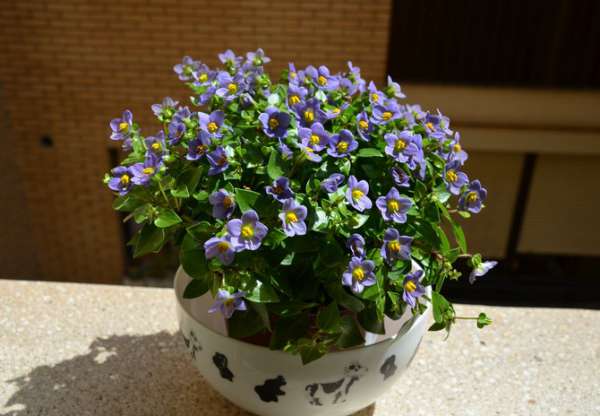

Like many indoor plants, Exacum is no exception and prefers high humidity. Since plants in most cases are located on windowsills near heating systems, it is necessary to spray the plant abundantly and regularly. Daily moistening by spraying can be enhanced using a flower tray, in which there will be moistened expanded clay.
The regularity and abundance of watering exacum depends on the season. In winter, watering is minimal, in the rest of the year - plentiful. Do not allow the soil to dry out in the pot.
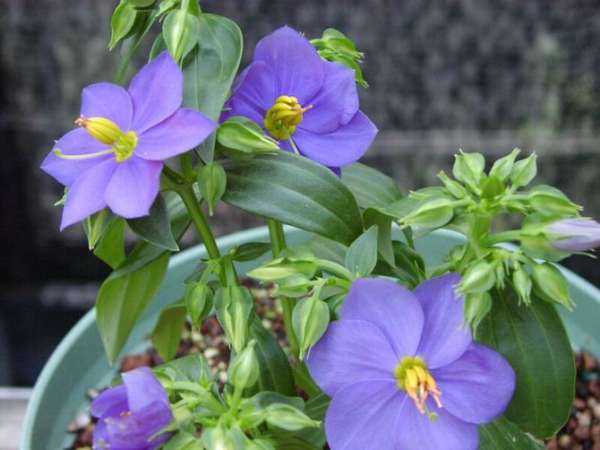

Any universal soil purchased in a retail network or prepared independently is suitable for growing exacum. The composition of the soil should include sand and turf soil (one part) and leafy soil (three parts).
Top dressing and fertilizers
From the beginning of spring to the end of summer, exacum must be fed with special fertilizers for indoor flowering plants at least twice a month.
One-year exacum does not require transplanting, but other species, as they grow, need to be transplanted into a wider and smaller flower pot. It is very important that there is a drainage layer at the bottom of the container.
A place
Exakum grows in a much warmer area, however, rather high above sea level. It is much cooler at an altitude of about 1000 meters. Since the plant fades quickly at high temperatures, you need to provide a moderately cool place. Choose a bright place that is not exposed to the scorching sun. In the summer - the sill of the east window. Also typical is the western window, where the sun is after 17.
The plant for the summer period, no earlier than mid-June, can be put outside in light partial shade.
When sowing in autumn, provide the exakum with a lighted room with a temperature in the range of 12-15 ° C. Lower temperatures promote higher flowering. The temperature should never fall below 12 ° C, the plant will die.
Frost resistance, minimum temperature, approximately 12-13 ° C.
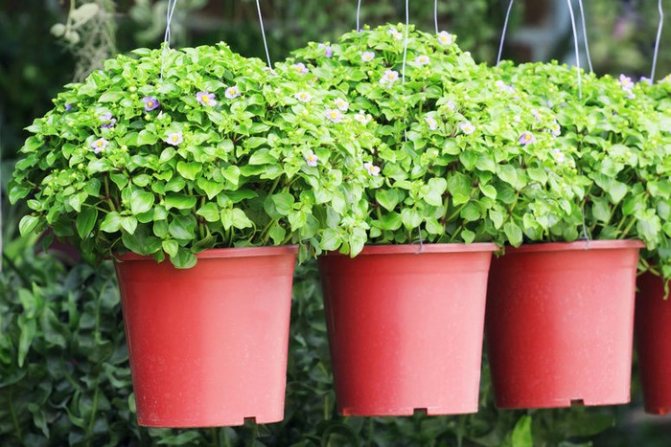

Reproduction exakum
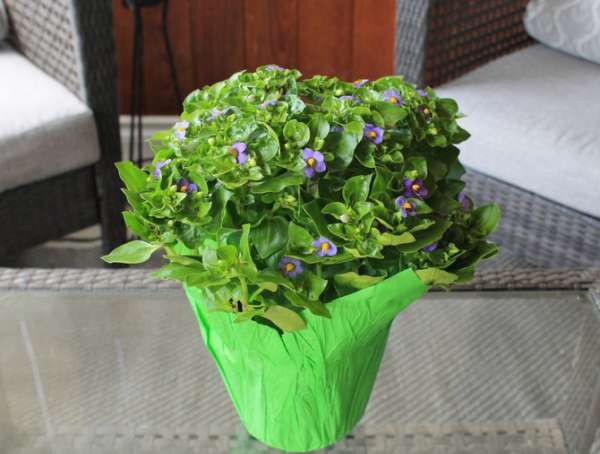

The indoor flower exacum is easily propagated by cuttings from the top of the plant, which, after 10-15 days, start up young roots, and it is equally good in water and in the ground.
Exakum can also be propagated by seeds that need to be sown in the autumn and create greenhouse conditions for them before the emergence of young shoots.
Turkish carnation
Another name is bearded carnation. A very popular (and deservedly) plant, which is actually a perennial, but cultivated as a biennial. Carnation seeds are sown at the beginning of July, and already at the beginning of August the plant takes the form of small bushes, ready for transplantation to a permanent place.
It is important that the plant after transplanting has time to gain strength and get stronger - then it will survive the winter better.
The next year, in June, the carnation will already bloom, and it will look very impressive. On knotty stems up to half a meter long, balls of five-petal flowers, tightly adjacent to each other, sway in the wind. Such a charm can stand in the cut for a long time.
Turkish carnation is rightfully considered one of the most popular flowers among gardeners.
Nowadays, many varieties of Turkish carnations have been bred, both simple and terry. Moreover, if you want to grow terry beauties in your home, it is better to use cuttings collected in June, and not seeds, since in this case their doubleness is well preserved.
Carnation blooms for 15-20 days. The best place for sowing it is a sunny place on loam or sandy loam. Carnation reproduces well by self-seeding.
Types of exakum
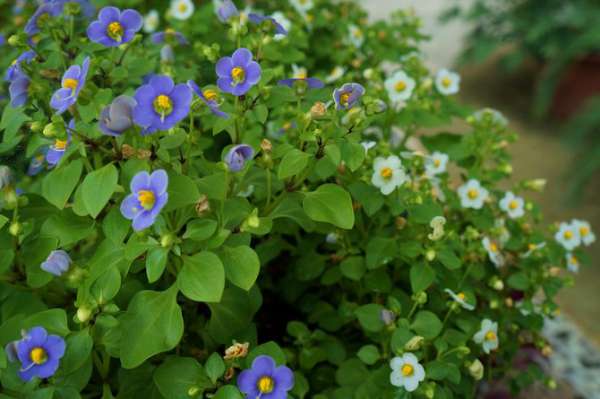

Exacum affine
The family includes a large number of species and varieties. One of the most common is Exakum related. This species has erect stems, and the whole plant reaches up to 30 centimeters in height. The plant looks lush and solemn thanks to well-branched shoots with a large number of leaves (about 3-4 centimeters in length) of a rich green color with lighter veins in the center and along the edge of the leaf. Fragrant and beautiful purple inflorescences of several small flowers (about 1.5 centimeters in diameter) grow abundantly and densely. Depending on the variety, the color of the flowers can be blue, light blue, lilac and white with bright yellow stamens.
Ekzakum is a plant that forms a lush, spherical bush with a delicate and bright flowering. The flowers have a pleasant aroma. Annuals and perennial species are found in the natural environment. In shape, the flowers are similar to a violet, due to which the plant is popularly called the Persian violet. This unpretentious plant will become a real decoration for rooms, balconies, verandas.
Most popular biennial plants
Biennial plants are conventionally divided into flowering and fruit crops.
Blooming
Flowering biennials include:
Turkish carnation
Turkish carnation
The most popular are the Dutch varieties of these flowers, they are bright, velvety and tall. When planting them, it should be borne in mind that they prefer fertile soils and places saturated with sunlight. Intolerant of large amounts of moisture. With their help, you can create spectacular flower beds and front gardens. The disadvantage of the Turkish carnation will be low frost resistance.
Bell middle
The bushes of this flower reach a height of 50-90 centimeters. Terry flower stalks, most often painted in blue, purple, pink or white. You need to plant the bells in sunny places, you must have a support. When watering, water is poured strictly at the root.
Daisy
Daisy
This culture blooms in spring, therefore it belongs to the group of early species. It grows up to 10 centimeters in height, at the same time gives 20-30 bright inflorescences of white, pink, red or burgundy.This species loves sunlight, loose and nutritious soils, tolerates severe frosts well.
Forget-me-not
Forget-me-not
This plant blooms in early spring and prefers cool, shady places. It reaches a height of 20 centimeters, the flowers are painted in a bright, blue color. Works best with tulips, daffodils or pansies.
Viola or pansies
Viola or pansies
For garden cultivation, artificially bred hybrid varieties are used. Pansies produce abundant blooms of various colors.
An example of a biennial shrub is raspberry. In the first year after planting, it grows shoots, and in the second it yields.
Fruit
The following crops belong to fruit biennials:
White cabbage
White cabbage
The stem of this plant (stalk) in the first year has an erect shape, it is rather short, fleshy and thick. Basal leaves form a dense rosette - shakes. In the second year, the stump acquires a cylindrical shape, and the large, fleshy leaves become lyre-shaped. The top layer of the head is predominantly green, all other leaves are white. Cabbage grows throughout Russia, tolerates an unfavorable climate well and is not whimsical to care for.
Leek
Leek
This garden culture is very different from other representatives of its kind. The leaves are long and narrow, resembling garlic arrows in appearance. In the lower part, a false stem is formed, which is a white leg, sometimes it thickens and becomes like an onion head. Leeks are grown using seedlings, which begin to be prepared in February.
In terms of its care, the plant is not whimsical enough and does not require special attention to itself. A distinctive feature will be the ability to accumulate useful trace elements during storage, while other plants lose them.
Carrot
Carrot
In the first season, this plant forms a long, fleshy, cylindrical or truncated-conical root vegetable weighing up to 500 grams and a lush bunch of bright green, pinnately dissected leaves. Most often, the root vegetable of carrots is colored orange, but you can also find varieties of yellow, burgundy, orange-purple or pale red. In the second year, the plant forms a complex, umbrella-shaped inflorescence, consisting of white, yellow or red flowers. The fruit has an elliptical shape and contains 2 seeds.
Beet
Beet
In the first year of life, this plant forms a rosette of erect, large leaves of an elongated elliptical shape and a fleshy root vegetable with a juicy pulp of a rich burgundy-red color. In the second year, a branched stem grows from the root crop, on which leaves and small green or white flowers, consisting of five petals, are formed. Usually, they are collected in bunches of 2-5 pieces. The fruits are one-dimensional nuts. The flowering period is June-August. Beetroot is a part of many dishes, so it is grown in almost all vegetable gardens, caring for it is very simple and even a beginner can do it.
Parsley
Parsley
Parsley root is fleshy, fusiform, up to 30 centimeters long. Stems are tall, erect and bare. The leaves of such a plant are ovoid, double-pinnate. Small, bisexual flowers gather in a complex umbellate bloom, located at the ends of the branches. The fruit is a flattened, marsh-colored two-seed.
Biennial plants have a specific life cycle that is not like other crops. When growing them, it is imperative to take into account all the features and rules for planting and care.
Exakum description
Ekzakum is a member of the Gentian family. Distributed in the countries of East and South Asia, in Malaysia. The root system is fibrous, branched, located close to the soil surface. Fleshy stems are densely covered with leaves.Shoots branch well, covered with internodes, which are located very close. The height of the plant is 30 cm.
Leaves are opposite, attached to stems on short petioles. The surface of the sheet plate is glossy, covered with 1-3 longitudinal relief veins. The shape of the leaf is rhomboid or ovoid, the length reaches 3.5 cm. The lateral edges are smooth, the ends are pointed.
When does exacum bloom?
Abundant flowering, lasts from May to September. Flowers axillary, solitary, appear on rigid, short peduncles. The petals are rounded, arranged in one or more rows. The open flower is 1.5 cm in diameter. The core is lush, consisting of many yellow stamens. Petals are white, pink, purple.
In place of flowers, after pollination, seed pods ripen, containing many small seeds.
Pansies (video)
They bear another name - Vitrokka violet, which, however, is very relative, since these names hide a whole string of varieties and stortogroups that were obtained thanks to many years of hard work of breeders. Usually the height of these plants does not exceed 30cm. Flowers are arranged one at a time, consist of five petals and have many shades - they can be one-color, with an eye, consist of two or even three flowers. Modern hybrids allow to grow flowers up to 6-8cm in diameter of one pure color. Violet blooms from May to August. This period depends on the time of planting the seeds.
The pansy flower only in the sun shows the full brightness of its colors
If you want violets to bloom in early spring, plant the seeds in your beds in the second half of June. There is such a moment - the plant should have time to form well before the onset of cold weather, but at the same time it should not have time to bloom. Seedlings appear in 8-14 days, after which they are planted in a permanent place. New hybrids with large flowers can be planted at home in January-February at home, and in May they can be planted in open ground. In this case, the violets will bloom in June.
The peculiarity of pansies is that they can be transplanted even in a flowering state, while it will take root well.
This flower loves the sun, and although it may well grow in slightly shaded areas, it loses the brightness of the colors. It is preferable to grow it on nutritious loams that hold moisture well. Actually, violets love moisture and tolerate cold well. To help the plant bloom even more luxuriantly, feed and water it regularly. Pansies can be successfully grown both in flower beds and in pots and garden pots and on the balcony. If you are planting an already flowering plant in open ground, you can make a real color composition from it if you use several varieties of different colors.
Growing exakum from seeds at home
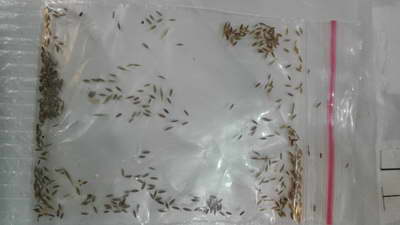

Exakum seeds photo
The exacum flower is propagated by seeds and vegetatively.
Exacum is sown in the fall into wet sandy-peat soil. The seeds are very small, they need to be evenly spread over the surface of the soil, you do not need to sprinkle them with soil, otherwise they will not germinate. Cover the container with crops from above with foil or glass and place in a warm place. The greenhouse needs to be aired daily for 15-20 minutes.
Exacum seeds will germinate in 2-2.5 weeks. Seedlings develop quickly. When 4 real leaves appear on a young plant, dive into separate small pots. By the spring, they will gain strength and begin to bloom.
Biennial Miracles
Biennials usually live up to their name. The first year they gain green mass, and the second year they delight with flowering, after which they scatter the seeds and die. There are flowers that are cultivated as biennials, but in fact can be grown for several years.In the third year, they bloom worse, grow less often, and sometimes die altogether during wintering.
This led to the division of biennials into true biennials and those that are grown as biennials, being perennials. The first group includes bell, lunaria and mallow. The second - pansies, daisies, forget-me-nots and Turkish carnations. By the time of their flowering, biennials are divided into spring and summer. Spring includes forget-me-not, daisy and pansies, summer - night violet, foxglove, Turkish carnation, bell medium, lunaria and mallow. It is the spring biennials that are especially appreciated by gardeners for filling the niche between spring and summer flowers with their flowering.
Consider the main frequently used biennials that you can try to plant on your site and thus revive its appearance.
Photo gallery of biennials in their summer cottages
Carnation Turkish Carnation Matron's Party
Propagation of exakum by cuttings
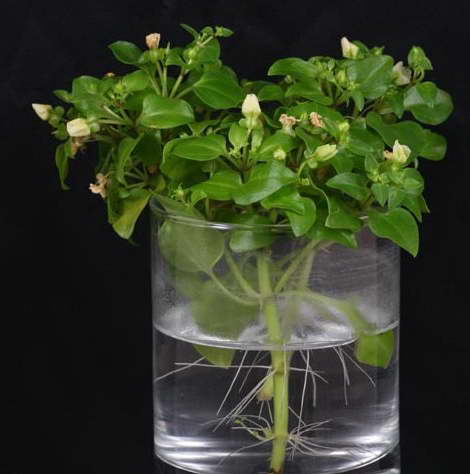

Cutting exacum in water photo
Adult bushes can be propagated by apical cuttings. Cut the shoots 8-10 cm long so that they contain 2-3 internodes. Cuttings can be rooted in moist soil, covered with a hood, or in water without any cover. After 10-14 days, the roots will form. Transplant the plant into small potting soil for mature plants. With this method of reproduction, flower buds may appear after 2 months.
Reproduction
Exakum is propagated by cuttings and sowing seeds. Saplings are difficult to root, providing a minimum of 21 ° C and high air humidity, even in water.
Exakum is easier to grow from seed. The seeds are small, like dust. One gram contains 40,000 seeds. For even sowing, the seeds must be mixed with dry sand. The seeds are not covered, only pressed into a leveled wet substrate. Seedlings appear in about 2-3 weeks with a temperature of 21-24 ° C. Sowing can be done in autumn, providing the exakum with as much light as possible and a temperature of about 15 ° C throughout the winter. Otherwise, it is better to sow in late February and early March.
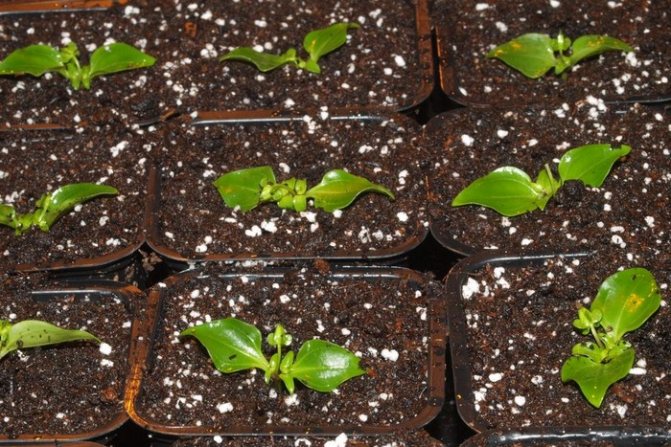

Exacum plant care
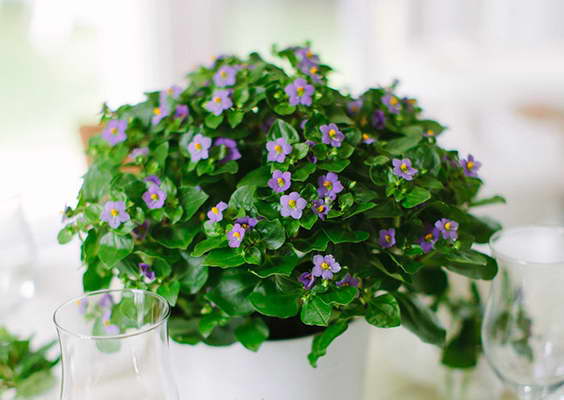

How to take care of the exakum at home photo
Taking care of your exakum at home is pretty simple. Without much effort, the plant develops quickly and gives a gentle flowering.
Initially, the exacum is planted in a low pot with a diameter of 7-10 cm. The one-year exacum does not require transplanting, and the rest of the species are transplanted into a slightly larger pot as they grow. For greater splendor of the bush, you can plant 2-3 plants in one container.
At the bottom, be sure to lay a drainage layer up to 3 cm thick, consisting of expanded clay, clay shards, etc.
The soil should be light, breathable. Neutral and slightly acidic soils are suitable, for example, the following soil mixture: sod and leafy soil, peat, sand in equal proportions.
Seat selection
Choose a place that is bright, sunny, the abundance of flowering directly depends on this. Direct sunlight will not harm the plant, but on especially hot days you need to expose to fresh air or ventilate the room. No shading needed. Exakum-annual can be planted even in open ground at the end of May. Find a calm area.
Temperature and humidity
The optimum air temperature for a plant will be in the range of 17-20 ° C. Hypothermia (air temperature below 13 ° C) will lead to the shedding of leaves and the gradual death of the plant.
The soil should always be slightly damp, so regular and abundant watering is essential. Avoid stagnant water, otherwise root rot may develop. Water with warm, softened water.
The plant loves humid air: spray the shoots regularly, you can put an aquarium next to it.


Exakum blue star photo
You need to feed it every 10-14 days with a solution of mineral fertilizers for indoor decorative flowering plants.
The branchy shoots of the exacum take on a spherical shape on their own, so you don't even have to cut the plant. Remove wilted buds to maintain attractiveness.
To form seeds, pollinate the flowers with a brush yourself, or put them outside for insects to do it.
Diseases and pests
Proper care will keep your plant safe from disease. But its juicy foliage attracts pests: spider mites, aphids, and felt. They most often appear when the air is dry (do not forget to regularly spray the plant, perhaps in this case the problem will bypass you).
If you identify pests, first rinse the plant under a warm shower, and if necessary, resort to insecticide treatment.
EXACUM PERSIAN VIOLET
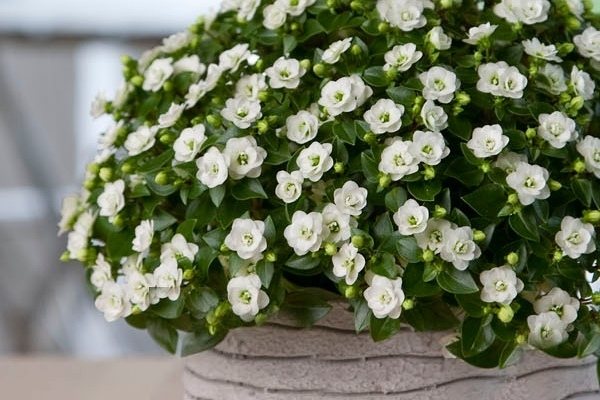

Exakum or Persian violet is not yet so often found in home collections, but with its tenderness and grace this plant can compete with Saintpaulia, the famous Usambara violet. Is it difficult to grow exacum? Persian violet is a compact plant (height 30cm) with short, well-branching shoots. Leaves The leaves are opposite, short-petiolate, 3-4 cm long, elliptic or lanceolate-cordate, with a smooth edge. Inflorescences of exakum - few-flowered brushes, appear on the tops of the shoots. The flowers are five-petal, fragrant, small, about 1.5 cm in diameter. Coloring - violet, blue, white, less often purple tones. The plant's large yellow anthers create a very bright center. The flowers cover the whole plant abundantly. The Persian violet blooms for about three or four months. To prolong flowering, you need to remove dry flowers so that the plant does not waste energy on setting seeds. The peculiarity of the Persian violet is that it does not live long for 1-2 years. Re-flowering is difficult to achieve, so many growers find it a difficult indoor plant to care for. In fact, there is nothing complicated, you just need to take into account that the lifespan of this home flower is short. When choosing an exacum in a flower shop, it is important to choose a plant that is just beginning to bloom, then for several months you can enjoy the beauty of an elegant bush and each bud that opens. After flowering, the leaves of the Persian violet turn yellow and dry, it can survive the winter dormant period and bloom next spring, but the flowering will not be as abundant as in the first year. Therefore, it is easier to discard the old plant and plant a new one. TIPS FOR CARE FOR EXACUM (PERSIAN VIOLET) Lighting. He loves good lighting, you can keep it on the south window almost all year, except for a sunny summer in the sun, the flowering will end very quickly, the plant will dry out. And the problem here is not the lighting, but overheating! A western or eastern window can be considered ideal. In summer, it is recommended to place it outdoors, you can keep it on the north-facing balcony, shade on the south balcony. If a Persian violet is bought or presented to you in blooming state, then you can put it anywhere, except in too hot places, and just enjoy the beauty of the blossoming buds. Temperature. Ekzakum prefers medium temperatures and does not tolerate high or low rates. The optimum temperature is about 17-20 ° C. Air humidity. The Persian violet needs high humidity, so the leaves must be sprayed daily. It is helpful to put a humidifier next to the plant or spray the area around the plant. Watering. Water abundantly so that the soil is constantly slightly damp. The earthen lump should not dry out, but also water stagnation at the bottom of the pot should not be allowed. If the exakum hibernates, then watering is significantly reduced. At the same time, almost everything can dry out, but growth will resume in spring. Fertilizers.Plants with a short life period usually do not need feeding, but if the plant is planted in a small container, then it may lack nutrients, flowering will end quickly. It is useful to feed it 2-3 times a month with liquid fertilizers for flowering indoor plants. Transfer. If exacum is grown as an annual, then no transplant is needed. But sometimes plants are sold in very small pots, where the root system is completely entwined with an earthen ball. You can carefully, so as not to damage the roots, transplant the flower into a slightly larger pot. If the exacum is left for the winter, then it is transplanted at the end of winter, when it is almost dried up with a minimum number of leaves. The pot is taken only a little larger than the old one. The soil. The earthen mixture should be slightly acidic (5.0-6.0) or neutral (6.0-7.0), you can use a ready-made universal soil for decorative flowering plants. It is imperative to place drainage at the bottom so that water does not stagnate in the pot. Reproduction. Ekzakum propagates by seeds and cuttings. Since flowering occurs in 5-6 months, the seeds are sown in winter, scattering them over the surface of the earth and covering them with glass or a transparent bag. The soil is regularly moistened, the greenhouse is aired daily. After germination (about 2 weeks after planting), the greenhouse is removed. An important condition for seed germination is a soil temperature of at least 20 degrees. After the emergence of seedlings, they must be illuminated with a lamp so that they do not stretch out. When cuttings cut off a part of the apical shoot with three internodes. Rooting can be done both in water and in soil. Roots appear in 1.5-2 weeks. For cuttings, it is better to take shoots without buds, so the percentage of rooted cuttings is higher. But Persian violets go on sale in blooming form, so it is difficult to choose apical cuttings without buds for reproduction. Diseases and pests. Most often, exacum is affected by spider mites and aphids. Regular insecticides will help get rid of the problem. Of the diseases, the most common is gray rot, it appears from waterlogging of the soil. If the leaves begin to wither with normal watering, you can throw the plant away, it is affected by this dangerous disease.
A source
Types of exakum with photos and descriptions
About 30 species of exacum have been found in the natural environment. We grow two species and several varieties bred by breeders. They differ in the shape and color of flowers. So you can create a colorful mix on your windowsill.
Exacum related Exacum affine
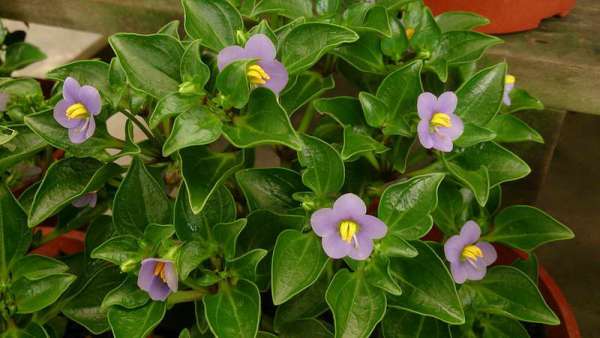

Exacum related Exacum affine photo
The most readily available, popular type. The compact bush has a herbaceous dense growth, the length and width is about 30 cm. The plant lives for 1-2 years, then renewal is necessary. Stems are erect, succulent, leaves are opposite, paired, located close to each other. The leaf plates are rigid, 3-4 cm long, painted bright green and covered with veins of a lighter shade. The flowers are single, simple, consist of rounded petals and a noticeably protruding middle, the diameter of the corolla is 1.5 cm.
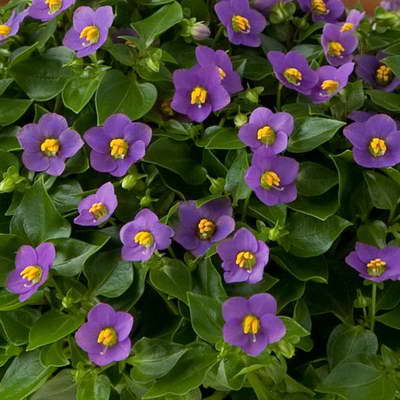

Exakum supreme photo
Decorative varieties have been bred with simple and double flowers, differing in the color of the petals:
- Blue eyes and blue dwarf: corolla color varies from blue to violet;
- White star and white gnome - snow-white bloom.
Exacum three-core Exacum triverve
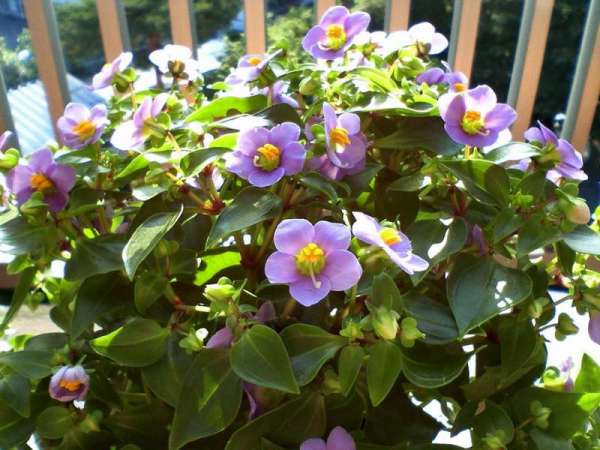

Exacum three-core Exacum triverve photo of flowers
The size is quite large, the bush reaches a height of up to half a meter. The stem is erect, covered with a smooth dark green skin, branches well. Leaves are oval or ovate, attached to the shoots with short petioles. 3 longitudinal veins of a lighter shade run along the leaf.The flowers are five-petalled, painted blue, the core is made up of short, plump yellow stamens.
- View the full image
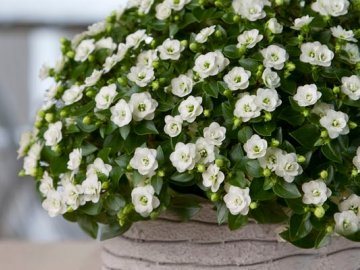

Description of the exakum and its types
Growing conditions
Reproduction exakum
Plant care
Diseases and pests
Often, flower growers are looking for unusual plants that would decorate the house, garden or verandas. Rare and unpretentious flowers are quite difficult to find. Ekzakum belongs to this category of ornamental plants. An unpretentious and beautiful flower will make any corner of the garden one of the most attractive. It is easy to grow exacum, it does not require special skills from a florist. But compliance with the basic rules of agricultural technology will help grow a lush bush and achieve luxurious flowering. For successful cultivation, the characteristics of this outlandish plant should also be taken into account.
Popular varieties
About 30 species of exacum have been found in nature. But in our country only two of them are grown in culture. Breeders have also bred several decorative varieties that differ in color and structure of flowers. Florists can purchase the variety they like or create a mix of exacums with different colors.
Exakum related is the most popular and readily available species. The plant forms a very dense herbaceous growth with a height and width of 30 cm. Usually each specimen lives for 1-2 years, then rejuvenation is necessary. On erect juicy stems, paired, opposite leaves are located close to each other. Hard leaf plates 3-4 cm long are colored bright green. The veins are lighter in color. The exacum flower blooms at the tops of the stems. Single simple corollas 1.5 cm in diameter consist of rounded petals and a strongly protruding core.
Among the decorative varieties, there are varieties with double and simple flowers. Depending on the color, varieties are distinguished:
- Blue eyes, blue dwarf - the petals are colored in various shades of purple and blue;
- White star, white gnome - plants with snow-white flowers.
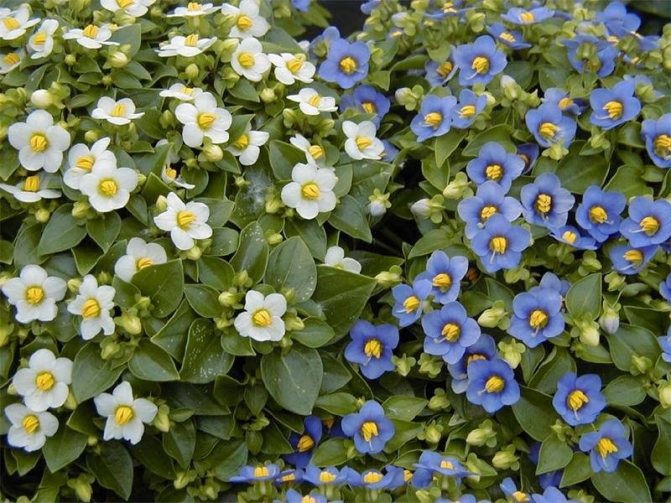

Exakum three-core... The plant is large in size, the height of the bush is 50 cm. The erect, highly branched stem is covered with a smooth, dark green skin. Ovate or oval leaves are attached to the shoots with short petioles. On the foliage, 3 longitudinal veins of a lighter, but not contrasting shade are visible. During the flowering period, many blue, five-petal flowers are scattered throughout the crown. Their pith consists of short but rather thick yellow stamens. The variety is more cold resistant and grows over several years. Distributed in Sri Lanka.
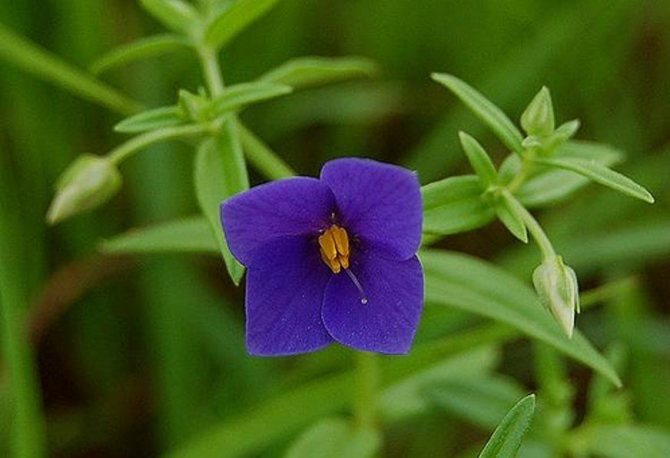

Description of the exakum and its types
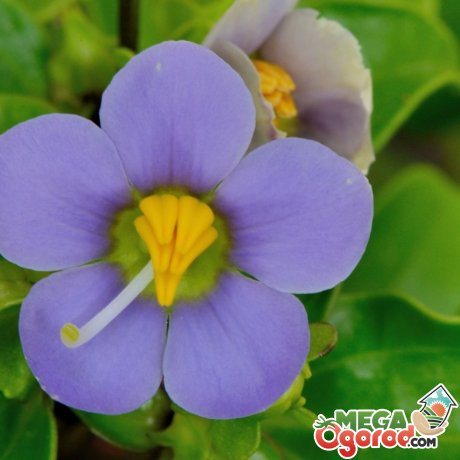

The plant belongs to the gentian family. It grows wild in the vastness of South and East Asia. The plant is found in Malaysia and Greece. In total, there are about 30 types of exakum. In the middle lane, they tried to grow many species, but only three took root.
Exakum is:
- A small bush, reaching a height of no more than 50 cm.
- Leaves are fleshy, shiny, bright green, pointed at the tips. To many, they resemble a miniature version of anthurium greenery.
- Flowers are spread over the entire surface of the bush.
- During the flowering period, it is completely covered with delicate inflorescences, reaching no more than 1.5 cm in diameter.
- The color of the flowers varies - snow-white, purple, blue or lilac. The middle of the flower is decorated with yellow stamens.
- The plant has a wonderful scent that spreads throughout the room or garden. For this property, it is also called a violet.
Since not all species are able to develop and bloom at home, florists distinguish only three of them. They are used to decorate rooms, halls, verandas, terraces or gardens. In culture, exacum is grown as an annual, while in the wild it is known as a perennial plant.
There are the following types:
- The related exakum is one of the most common plant species. Its foliage is highly branched and forms a spherical shape, strewn with flowers. It reaches a height of 30 cm. The leaves are juicy, fleshy, bright green. The most common varieties of this species are "Blue Dwarf", "White Gnome", "Blue Eyes".
- Ekzakum three-veined - another interesting view. Florists love to grow it for its large foliage and beautiful flowers. The plant reaches 50 cm in height and is used for landscaping balconies or terraces. This type of exakum is resistant to cold weather and temperature extremes.
These two species have taken root in the middle lane and are successfully grown by flower growers. The rest are not adapted for growing in apartments or gardens. More often the exacum blooms once and ends its life cycle. But many "make" the plant bloom in the second year. In this case, the flowering will no longer be as abundant and lush as in the first year. Florists recommend planting the flower as an annual.
Description of the Exakum plant
These are herbaceous plants with erect branches and superficial fibrous roots. Their leaves are opposite, they can be ovoid, diamond-shaped, pointed, oval.
Small stellate flowers with various colors: blue, light blue, purple, violet, white. They are quite aromatic.
Exakum refers to endemic - plants that live in a limited area. For the exacum, this is the Socotra archipelago. There are about 30 species in the genus. But only one is grown indoors.
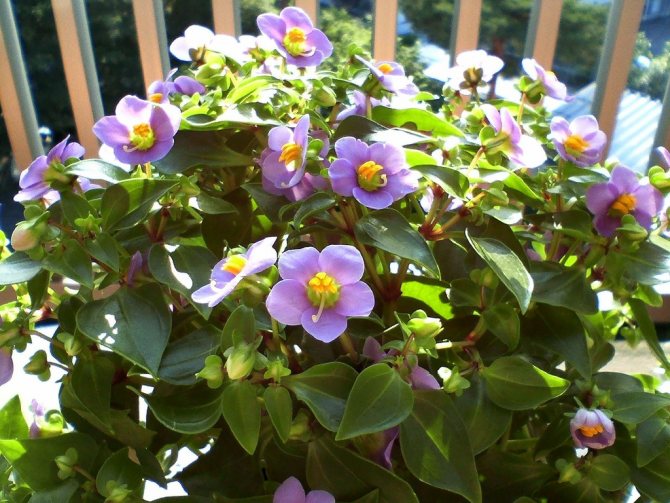

Growing conditions
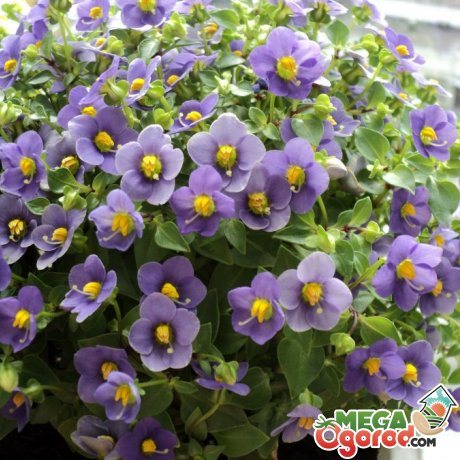

Exakum thrives in warm and sunny locations. If you plan to grow a flower in an apartment, choose south windows or southeast windows for it. Ekzakum responds well to direct sunlight a little further from the window. The more light it receives, the better it will bloom.
Air humidity in the room also plays an important role.
If the room is too hot, constantly spray the air and the plant itself. Place the Exakum near aquariums or mini-ponds. The pot can be placed in wet peat or pebbles. An important condition is the degree of aeration in the room. The room should not be stuffy. To do this, you need to open the windows, but not create drafts.
The flower loves loose and fertile soil. The acidity is neutral. Usually, a soil mixture is selected from turf, leafy earth, humus, compost and a little sand. In such a substrate, the plant will develop rapidly and delight with luxurious flowers.
Foxglove purple
A pretty plant with flowers in the form of a thimble, collected in a one-sided ear on a peduncle 1-1.5 m high, begins to bloom in July and blooms until September. Foxglove seeds are very small, so in June-July they are sown in the ground and sprinkled with sand. In August, they are seated in a permanent place.
Almost all parts of the plant are poisonous, so if small children appear on the site, it is not recommended to plant the foxglove.
Foxglove prefers loose, moist and fertile soil and a sunny location. It blooms in partial shade, but somewhat worse. If you cut off the faded stems, new flower stalks will appear.
Foxglove is a beautiful and spectacular, but at the same time poisonous biennial
This is not the whole list of biennials that can be planted on the site at the beginning and middle of summer. However, planting and growing any of the listed plants will give you great pleasure. After all, the result of your labors will not be visible immediately, but only in the second year, which means that a small intrigue remains, which turns into joyful moments of contemplation of flowering plants.
A huge number of different crops are grown at any summer cottage. They differ from each other not only in function, appearance, fruit or flowering, but also in their life cycle. There are annuals, biennials and perennials.
Reproduction exakum
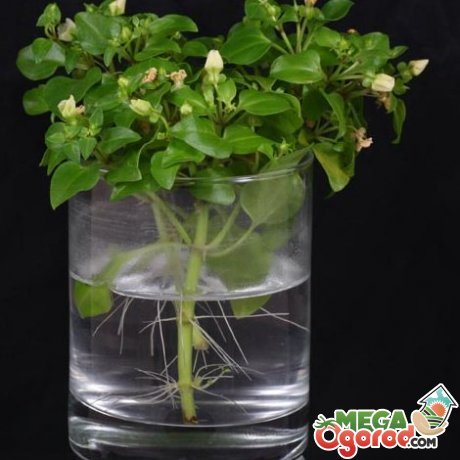

More often, flower growers use the seed method of propagation.The vegetative method is also popular, but less so than the seed method. Cuttings are cut from a one-year-old plant in early spring. They quickly take root and take root. It is recommended to cut off the apical branches with three internodes. Rooted either in water or in a substrate. The cuttings will bloom in three to four months.
The seed method is more painstaking and is of interest to florists with experience:
- Seeds are sown in winter so that in spring the sprouts have already begun to gain strength and color.
- The seed is mixed with sand and spread gently on the soil surface. You don't need to cover it with earth.
- The container is covered with foil or glass. The room temperature is kept at about 20 °.
- When two or three leaves are formed on the sprouts, the exacum dive into separate flowerpots.
The air temperature for growing a plant should be between 18 ° and 20 °. In winter, not lower than 15 °. If a related exakum is grown, there should be no sudden temperature changes in the room. The plant will not stand this and will die.
Care
It is unlikely that it will be possible to preserve the exacum after flowering. Anyone with a sufficiently lit area with temperatures around 15 ° C can give it a try, but they will get a much less attractive plant.
After bringing exacum to the home, the task is to maintain massive and long-term flowering. In addition to space, the duration of flowering is influenced by the systematic removal of dead flowers and maintaining the soil in a slightly moist state. Only a thin top layer should dry. With this watering system, it is easy to flood the plant. Water for irrigation is either summer or ambient temperature, not directly from the tap. Each overdrying will result in an almost immediate end of flowering. If the soil is wet, and the plant withers, it is a signal of flooding of the substrate and rotting of the roots.
Exakum, originally from the island, has a higher humidity than ours. Place the pot on a pallet with wet pebbles. Spraying the leaves is possible, but adversely affects the flowers, not the best way to increase the humidity of the air.
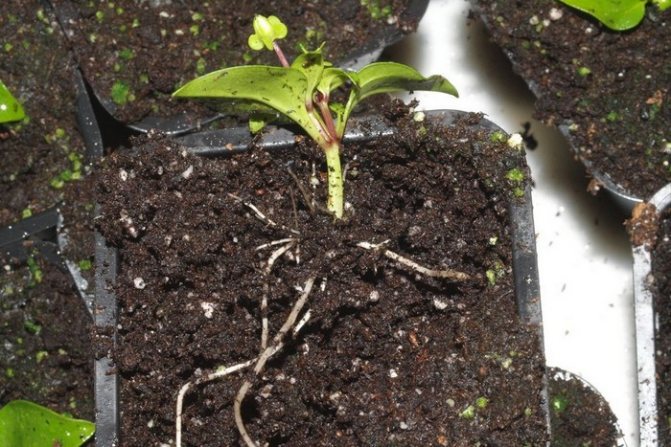

For growing exacum from seeds, the soil before the last transplant can be a normal soil for flowers, but loosened with perlite, fine gravel or vermiculite, it will protect thin roots from excess water.
Exakum has a great demand for nutrients, does not like excess salts in the soil, it is better to add fertilizer once a week, half the dose. Fertilizers are used for flowering plants. When grown from seed, fertilizers with a balanced composition are used in the early stages.
Plant care
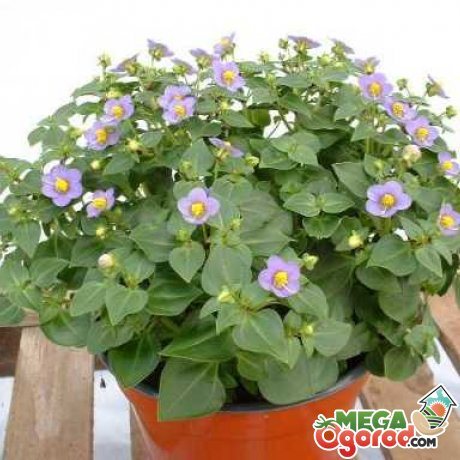

Exakum care involves standard procedures:
- Water the flower as needed. Do not overfill the plant, otherwise it will die from root rot. To avoid this, 3 cm of drainage is poured onto the bottom of the flowerpot, the pot must be with holes.
- If it's too hot in the room or outside, sprinkle. Use settled, warm water.
- If the soil mixture is composed of all the necessary components - sod, leafy soil, humus, compost and sand - the plant does not need feeding. If something is missing, once every two weeks, you can apply a complex of mineral fertilizers before and during flowering. Overfeeding the exacum is undesirable. He will begin to fatten, you can never wait for flowering.
- During the flowering period, be sure to remove faded inflorescences. The measure is needed to maintain the decorativeness of the exakum.
- In winter, the plant is cut to about half. Water as the soil dries out. Usually faded exacum is removed and a new plant is acquired.
Video review
Exakum is a very delicate and vibrant plant, it forms a lush bush in a pot. Annual and perennial species are found in nature. On a dense spherical crown, many small fragrant flowers bloom. For its external resemblance and violet flowers, the plant is sometimes called the Persian violet.You can buy exakum not only for your own needs, but also as a wonderful gift. This unpretentious exotic is ideal for decorating rooms, balconies and verandas.
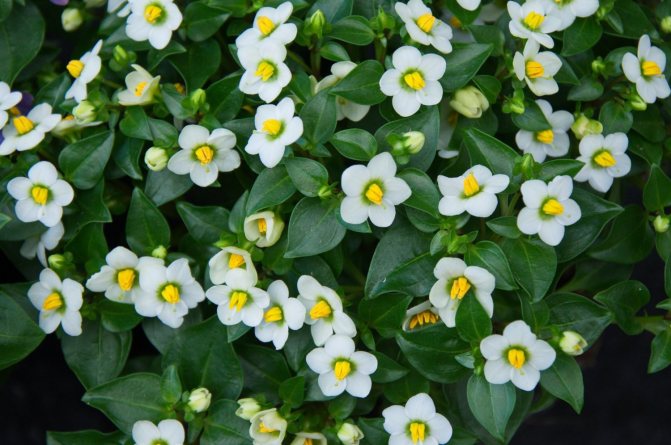

Diseases and pests
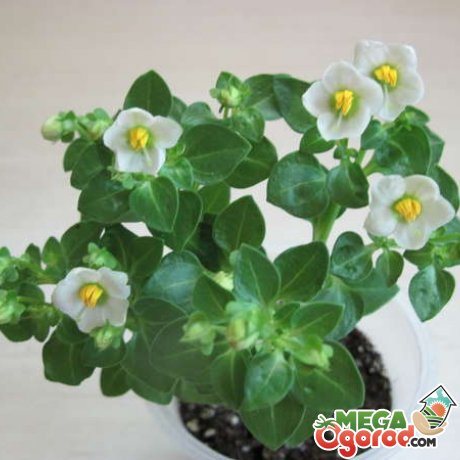

Among the diseases, only root rot can be distinguished. It can appear due to improper care. Low temperatures and excessive moisture in the soil contribute to the appearance of rot. It is difficult to save a plant from such a misfortune.
To do this, take it out of the pot, wash the root system and examine it. The affected areas are cut off and the flower is transplanted into fresh soil mixture.
Among the pests, spider mites, felt mites and aphids can be distinguished.
To combat these parasites, insecticides are used. The plant is washed from the shower with warm water. If the exakum is looked after and favorable conditions are created for it, neither pests nor diseases will appear. The plant will delight you of amazing beauty with flowering and dense foliage.
More information can be found in the video:
Exacum is a genus of short plants from the Gentianaceae family, which includes about 30 species. Of this variety, only the related Exacum (Exacum affine), endemic to the island of Socotra, located in the Indian Ocean, has found its place in culture.
Exacum related - strongly branched herb, forming a dense bush about 30 cm high. Stems are erect, juicy, with short internodes. Leaves are opposite, short-petiolate, diamond-shaped, with a smooth edge, 3.5 cm in length. On the surface of the green leaf blade, three lighter veins are slightly distinguished - the central and lateral ones.
Flowering lasts 3-4 months, from May to September. During this period, small, up to 1.5 cm in diameter, fragrant flowers bloom in the axils at the tops of the shoots, abundantly covering the entire bush. The corolla of the flower is flat, regular in shape, with five almost round petals. The color of the petals depends on the variety, for 'Blue Roccet', 'Midget Blue', 'Blue Eyes' they are blue, for 'White Star', 'Midget White', 'Fu¬ji White' they are white. There are varieties with purple flowers. All of them are decorated with short thick bright yellow anthers.
Description
Exakum is one of the endemic species that grows in only one place, on the rocky slopes of Socotra Island, belonging to Yemen, located in the Indian Ocean.
Height, a purchased plant rarely reaches 30 centimeters. Height is the result of a chemical growth regulator applied by manufacturers. In nature, the exacum reaches about 60 cm, has an untidy appearance. Since the growth regulator works for 1 year, the stored plant for the winter will become much longer in the spring, less branched with much fewer flowers.
Flowering period, depends on the timing of sowing seeds. When sown in autumn, the plant will bloom from April to early July. With winter sowing, the exacum will begin flowering from July to September. One flower is resistant for several days, depending on the temperature. The higher the temperature, the shorter the freshness of the flower.
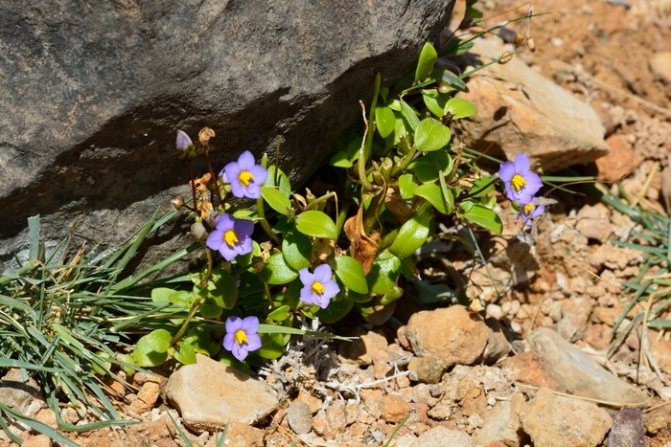

Top dressing exakum
It is recommended to feed the plant several times a month. Florists advise using mineral fertilizing for flowering plants.
When the Persian violet blooms, it should be fertilized with potash and phosphorus fertilizers. Nitrogen fertilizers, however, must be used after flowering ends.
The plant blooms from late May to late October. For more abundant flowering, dried flowers should be removed.
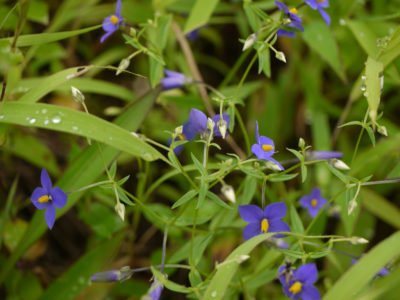

Exakum in winter
In winter, the plant must be additionally illuminated with a phytolamp, and also to ensure high humidity by placing a container with water next to the exakum. You should also halve the frequency of feeding.
Some growers, for a cold period of time, are advised to completely abandon fertilization. Watering should also be reduced. However, care must be taken to ensure that the soil does not dry out.
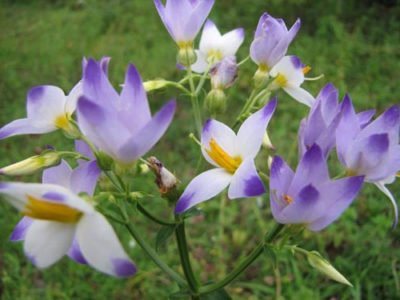

Exakum characteristics
Exakum related - the only one of 30 types of exacums that has taken root in indoor conditions. These plants have been known since ancient Rome. The Romans gave the name to the genus. The birthplace of the exacum sibling is the famous island of Socotra, known for its unique flora and fauna. It is located in the Indian Ocean south of the Arabian Peninsula.
Ekzakum is a medium-sized plant, not exceeding 20-30 cm in height. Its main decoration is flowers. During the flowering period, the exacum is literally strewn with small (1-1.5 cm in diameter), delicate, graceful, wide open star-shaped flowers with clearly visible yellow stamens. The color palette of flowers, unfortunately, is not rich. Exacums come in only white, blue or purple flowers. However, the undoubted advantage of these flowers is a very pleasant aroma.
Exacum blooms profusely in good conditions. Each flower lasts for a relatively short time, but since more and more new ones are constantly blooming, flowering as a whole stretches for 3-4 months. It can last even longer if withered flowers are removed in a timely manner.
During flowering, the exacum needs the most favorable conditions. It is especially demanding during the flowering period towards light. The more light the plant receives, the more it blooms.
1. Seven Secrets of Success:
| 1. Growing temperature: All year round, the exakum is suitable for a fairly cool temperature in the range of 15 to 18 degrees Celsius. |
| 2. Lighting: shade from direct sunlight during the daytime and sunbathing in the morning and evening every day. |
| 3. Watering and humidity: uniformly moist substrate during growth and budding, reduced watering in autumn - winter. Air humidity is high. |
| 4. Features of the: Exakum is attractive and easy to grow at home with minimal maintenance. |
| 5. Priming: loose substrate with a high content of organic matter and good drainage, easily permeating moisture and air to the roots of the flower. The substrate should have a neutral or slightly acidic pH. |
| 6. Top dressing: during the entire growing season - with mineral fertilizers for flowering plants or organic matter every 2 weeks. After flowering, 1 - 2 dressings are carried out and fertilization is stopped until the next season. |
| 7. Reproduction: Apical cuttings rooted in spring and summer, also grown from seed. |
Botanical name: Exacum.
Exacum flower - family... Gentian
Origin... East Africa.
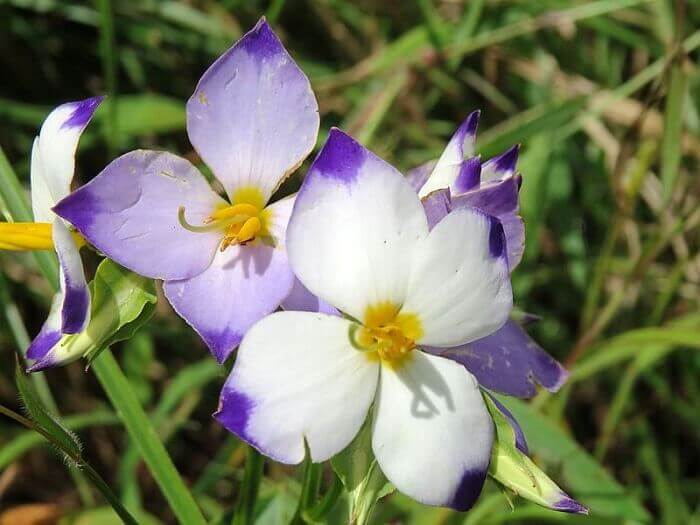

Description of the plant... Exakum is a small genus of biennial or annual plants, consisting of 25 species. Exakum is a low, rounded herbaceous plant. The stems are profusely branched, densely covered with simple, dark green, glossy, cordate or lanceolate leaves. Leaves are sessile or on very short petioles. Ekzakum is distinguished by abundant and long flowering. The flowers are solitary, axillary, about 2 - 3 cm in diameter, white, pink, but more often blue and purple, with 5 petals and bright yellow stamens. Exakum flowers give off a delicious scent. There are terry varieties, the flowers of which have a large number of petals.
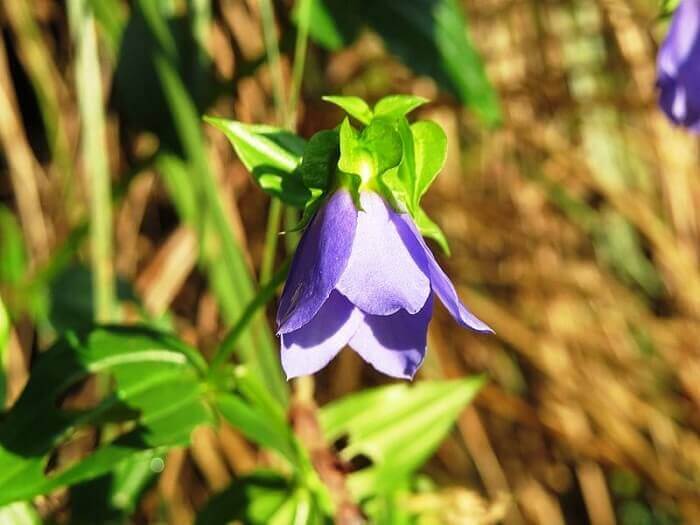

Height... 10 - 30 cm, exacum grows quickly.
Plant diseases and pests
If the plant is provided with the right conditions and proper care, it will not get sick. Pest attacks and disease attacks are observed only in the case of erroneous cultivation techniques. So, when waterlogged, the plant can hurt root rot. The disease can be detected during transplantation or suspected in case of wilting of leaves, flowers, stems, growth retardation. To heal the plant, you will need to transplant it into a new pot and soil.
The roots should be examined for rot, removed damaged ones, dried with crushed activated carbon, and healthy specimens should be treated with any systemic fungicide.If most of the roots are damaged, cuttings should be cut from the apical shoots and a young plant should be grown from them. Dispose of the old bush.
Important! When processing indoor plants, one should not forget about personal safety measures - carry out processing only in a well-ventilated place, protecting the body and face with special protective equipment. It is strictly forbidden to consume food and drinks during processing.
Of the pests exacum can infect spider mites, aphids, felt:
- Spider mite can be found on the bottom plate. In the course of its life, it leaves a cobweb on the stems and leaves. When it infects a plant, the leaves become brown spots, dry out and fall off. The tick starts when the flower grows in too dry and hot conditions. To prevent its appearance, it is necessary to maintain a high humidity. When a tick appears, you need to moisten the flower well and cover it with a bag. Of chemical agents, acaricides fight insects well. Preparations are suitable «Flumite, Akarin, Apollo, Borneo, Aktellik, Fitoverm.


- Aphid lives on the lower leaf plate. It is a small sucking insect measuring up to 1–2 mm. During his attacks on the plant, the leaves turn yellow and dry. Drinking juices from a flower, aphids can lead to its complete death. At the first detection of the presence of insects, you need to treat the bush with soapy water. If this method does not help, treatment with chemicals, for example, "Fitoverm", "Aktellik", will be required.
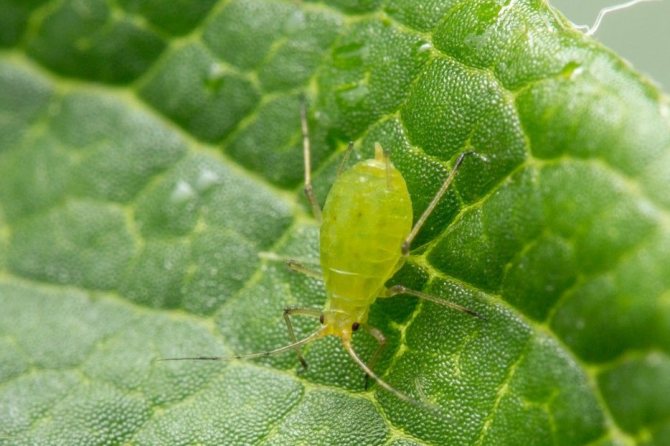

- Felt, or mealybug, leaves behind white lumps on the soil and flower, similar to pieces of cotton wool. The fight against this insect is carried out by wiping the organs of the bush with soapy water, infusions of garlic or tobacco. In case of mass destruction, they resort to using the chemical agents Aktara, Biotlin, Calypso, Confidora, Fitoverma.
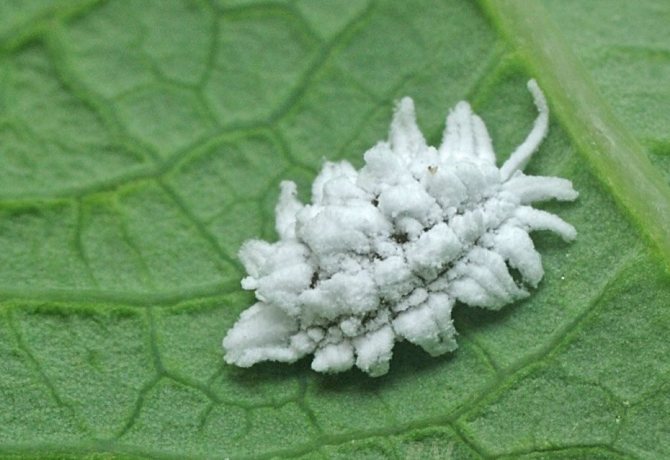

Thus, exacum is a beautifully and abundantly flowering houseplant with a short lifespan of 1–2 years. In order for it to please with abundant and long flowering in summer and autumn, it needs to create favorable conditions and provide quality care for it.
General information
Unusual, but at the same time elegant flowers with a bright yellow center, framed by luxurious dark green foliage, make Exacum one of the most spectacular home crops. At first glance, the Persian violet can be mistaken for an artificial flower, because it looks just perfect.
Ekzakum with its beauty is able to compete even with spoiled orchids, because it can delight for a long time with its gorgeous flowers blooming on the windowsill for 3-4 months.
The Persian violet is an impeccable plant that combines harmony, nobility, elegance and simplicity without too colorful and catchy elements. However, for the Exakum to look perfect, it must be properly cared for.
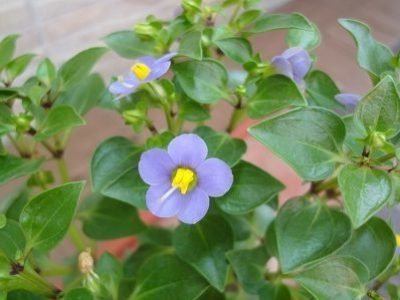

The flawless beauty of Persian violets
Despite the fact that the charming Persian violets are sold here as annuals, in fact, these crops are full-fledged herbaceous biennials. They can also be grown as perennial crops, but, as a rule, after flowering, which lasts all summer and most of autumn, the plant simply dies off, and if it blooms next year, it is only very scarce, it cannot be saved further. Usually exakum blooms magnificently only in the second year, but the wait is fully paid off.
The unique flowers of this culture are simple, pretty, with a bright yellow eye. In addition to the luxurious, very densely packed foliage, they create the impression of an artificial miracle. Of all the living bouquets, exacum is one of the most spectacular crops. He is able to outshine floral arrangements of any complexity. This plant is not afraid of absolutely any entourage, loves additional pot decor and growing in containers with the most striking design.In any setting and in any room, the Persian violet literally looks like a blooming miracle. And all the long months, while exacum pleases with its flowers, it is literally impossible to look away from it. It is quite easy to understand what lies behind such an atmosphere-forming influence on the interior. Exakum is the very example of an impeccable combination of simplicity and elegance, nobility and harmony, beauty of details without pretentious or catchy, too colorful elements that create an image of absolute perfection. For the Exakum to really look impeccable, it will also need appropriate care.
Exakum (Exacum) represents a delightfully diverse family, primarily in the beauty of flowers and the richness of the blue palette, the Gentianaceae family. This plant can be found in Malaysia, South and East Asia; by its origin, the exacuma may well be called oriental exotics. In the West, they are considered one of the oldest cultures, known as the German Violet. Despite the fact that among exacums there are both annuals and perennial herbaceous plants, it was short-lived species that became widespread in room culture. These are compact crops, with fairly strong and thin erect shoots and a beautiful mass of lanceolate-heart-shaped leaves with a smooth edge. The flowers are collected in small-flowered clusters of inflorescences, flaunt a simple five-leafed shape with an unusual convex center and captivate with a smell and a rich selection of violet, blue and purple colors.
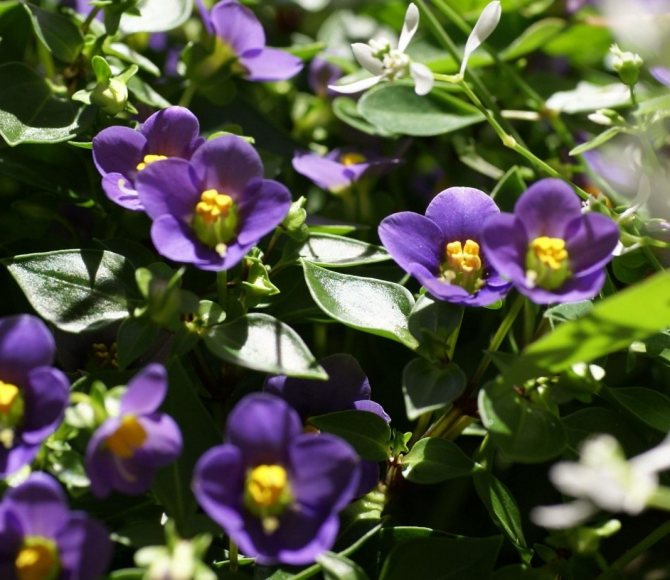

Exacum related, or Persian violet (Exacum affine). <>
In room culture, the genus exacum is represented in a single number. The most popular plant of the genus and the calling card of all exacums - Ekzakum related (Exacum affine). This is a magnificent herbaceous plant that naturally has the ability to bush densely and form amazingly dense bushes. Despite the fact that this handsome man reaches a height of only 30 cm, and the stems are erect, it resembles a dense cushion of greenery. Succulent, with shortened internodes, shoots are densely dotted with opposite, cordate, smooth leaves up to 4 cm long, sitting on short petioles. On their surface, with a muted, but beautiful grassy-green color, three lighter veins appear slightly - the central and two lateral ones. The edges of the leaf also appear lighter.
The flowers of an exacum related always bloom at the tops of the shoots. It is quite difficult to understand that they are located in thin inflorescences: they seem to be solitary because of the green color of the buds that completely merges with the leaves. The flowers are small, reaching only 1.5 cm in diameter, but the beauty of each individual flower is enhanced by the quantity: the flowers densely cover the entire plant, as if they are evenly scattered over the bush, adding to this exotic charm. The main advantage of the exacum bloom is its impeccable regular shape with 5 round petals, which seem to overlap each other in a spiral, forming a flat corolla. The massive, voluminous anthers of the plant create a very bright center, which, even from afar, is difficult to mistake simply for an eye-spot on the petals. Thick, short and pretty, they are always sunny yellow and contrast perfectly with the color of the petals. A subtle pleasant aroma is more or less pronounced in varietal plants (the names of varieties usually correspond to color).
How to care for a Persian violet
Taking care of the Persian violet is as easy as growing it. Subject to the correct temperature regime and the level of moisture in the soil and air, you can admire the flowering of exakum for several months in a row. Let's look at some of the basics of proper care for this plant together.
First of all, it should be said that exacum is a rather unpretentious plant in terms of temperature.The only thing that can ruin it is a decrease in heat below 10 degrees and a sharp drop. A comfortable environment for a Persian violet is a temperature in the range of 17-20 degrees. Exakum can only tolerate heat in the fresh air, so you can safely grow it in the summer on the balcony, in the garden, or simply put it on the cornice. As for the winter dormant period, it is not required for this plant. But, at these moments, if you still want to keep the violet for the next year, you can ensure that it is kept in a cool room with a temperature of at least 12-15 degrees. In winter, exacum should be protected from dry air emanating from heating devices. Drafts are detrimental to the plant even in summer, but the supply of fresh air must be constant.
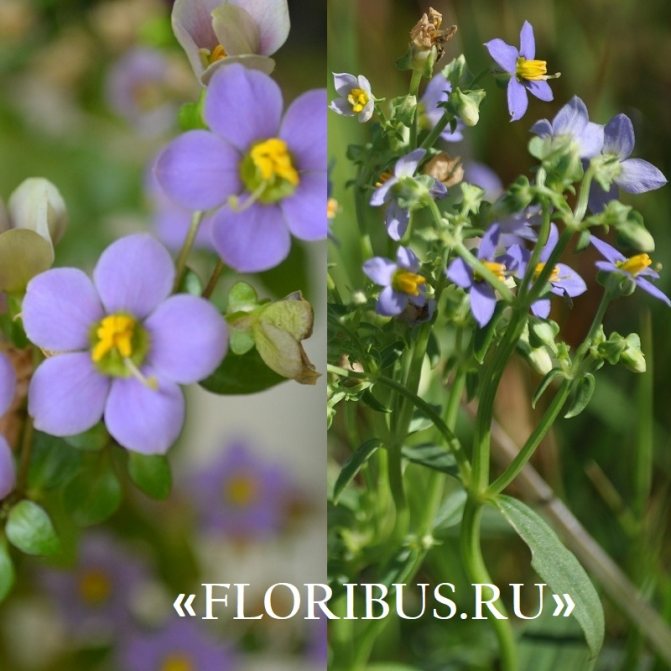

Reproduction of indoor exakum vegetatively and by seeds
Like all indoor plants, exacum can be propagated in two ways - vegetatively and by seed. Both options do not constitute much work, the only thing is that in either case, not difficult, but competent care for new plants may be required.
First, let's look at how easy it is to grow exacum with seeds, in fact, it will not be difficult at all.
First of all, when propagating exacum by seeds, make sure that the correct selection of the soil mixture is correct (this also applies to vegetative propagation of the Persian violet). It must be as light and breathable as possible. For this, you can use slightly acidic or neutral compounds. Often for these purposes, a sandy-peat soil with a thick drainage layer at the bottom of the pot is chosen.
Reproduction of exacum by seeds should be done in the fall, early summer or late winter. The sowing time is responsible for the moment the Persian violet begins to bloom. In general, when growing an indoor annual from seeds, ovaries appear only closer to summer (end of May).
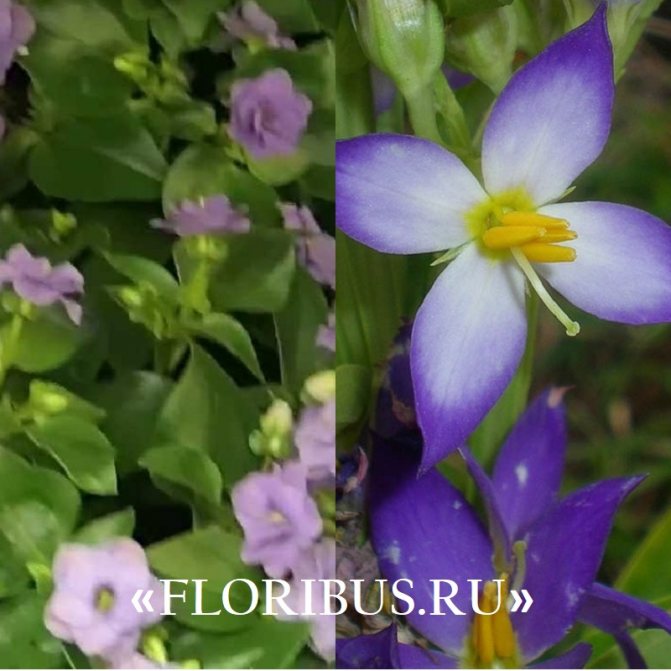

At the selected time, the seeds are carefully scattered over the surface of the soil without deepening. It is also not necessary to sprinkle it on top with a layer of soil. Before the first shoots appear, which is about 14-15 days, the container with seeds must be covered with a thick film or glass. In order for the plant to sprout faster, you need to observe high soil moisture, constantly ventilate the mini-greenhouse and provide good lighting for the future indoor flower.
The first shoots can be seen after 2 weeks, after which the glass or film is removed, the exacum is grown to a height of about 5 cm and the appearance of a second pair of leaves, only after that they are planted in low but wide pots, for example, you can take those that are shown in the photo below. The flowering of Persian violets, when planted in autumn, can be seen the next year in summer.
As flower growers know, when flowers are propagated by seeds, the maternal qualities of a plant are not always preserved. In the case of the Persian violet, this can be a change in the color of the buds and its size. But, in any case, a representative of his species will reward with a beautiful, abundant color by summer. For vegetative propagation, that is, with petioles, old bushes can be used. The fact is that the Persian violet is an indoor annual, and even if it turns out to be preserved for the second year, the flowering will no longer be so bright and abundant. Therefore, flower growers "update" their pets by cutting new petioles from old bushes.
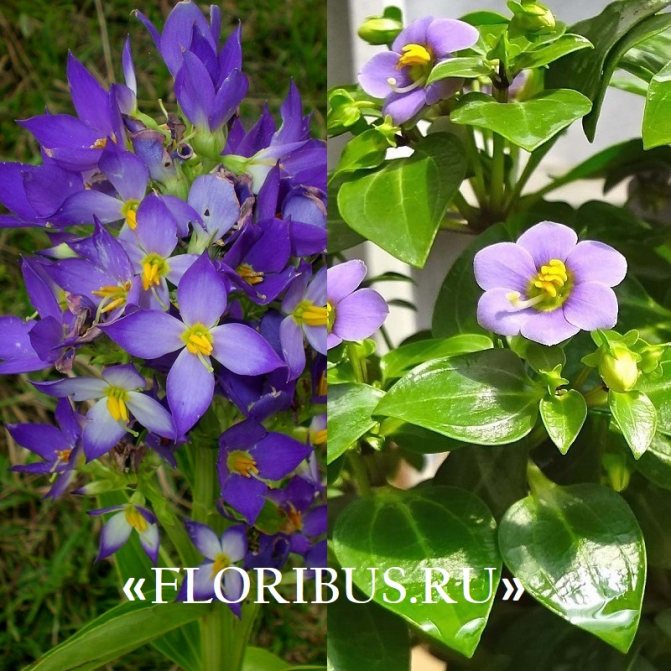

This is best done in early spring after wintering. It is necessary to cut off the apical shoots, they can begin to root immediately without special treatment in water or directly in moist soil. Many flower growers note that the stems with bud ovaries may well give strong roots, the only thing that is important is that they have at least 3 internodes, while its height will be about 8-10 cm. The lower pair of leaves is removed during exakum propagation, after which the cutting takes root within 14 days.
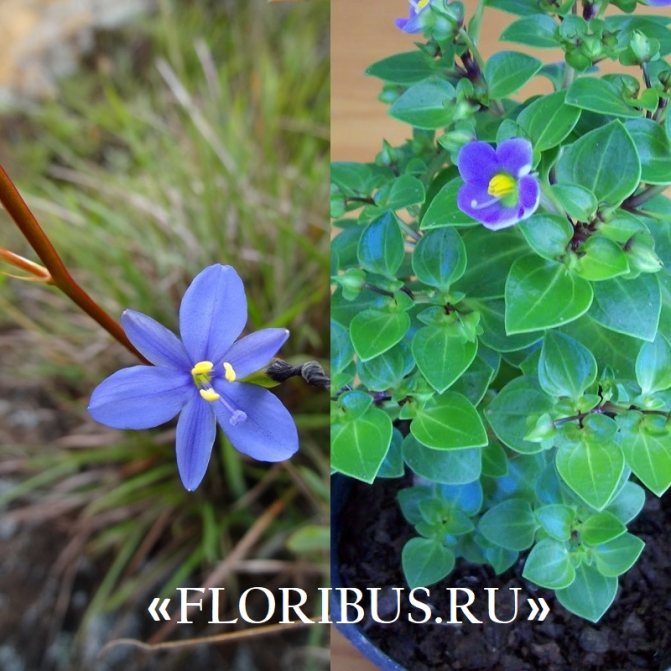

Reproduction methods
Exakum is propagated in two ways: vegetative and seed. Both the first and the second are easy to produce at home.
Seeds
Seeds and peat soil for planting can be purchased at a specialist store. Sowing is done in the fall. The moistened soil medium should be poured into a long, flat container. Pour seeds onto its surface, evenly distributing them. Next, the container must be covered with glass and placed in a well-lit warm place. The substrate is moistened as the top layer dries.
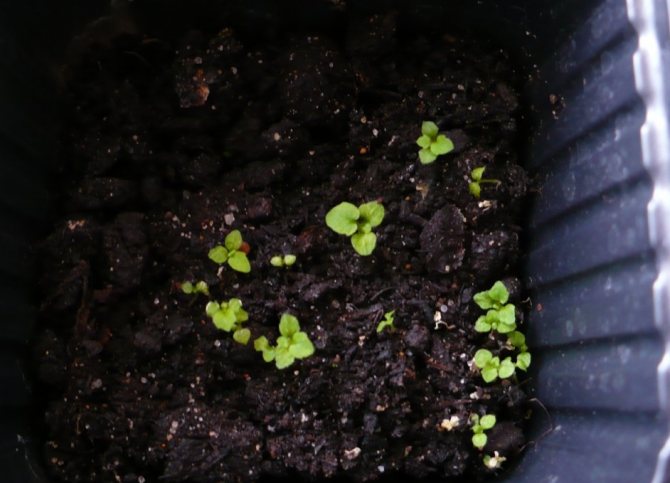

Every day, in order to ensure the flow of fresh air to the seedlings and prevent the development of fungal infections, the glass must be removed for 15–20 minutes. After the sprouts appear, after about 14-18 days, it is removed completely. As soon as the sprouts grow 4 leaves, they are dived into separate pots. They are looked after in the same way as for adult plants.
Cuttings
Cuttings are cut in spring from strong, well-developed apical shoots. It is necessary to cut off processes 8-10 cm long with 2-3 internodes. Cuttings are rooted in two ways. At the first, they are placed in water, which is periodically replaced. In the second case, the cuttings are placed in a moist substrate and covered with a plastic bottle. Roots should be expected after 2-3 weeks. Then the plants are transplanted into permanent pots. To get a very lush bush, you can plant 2-3 cuttings in one pot.
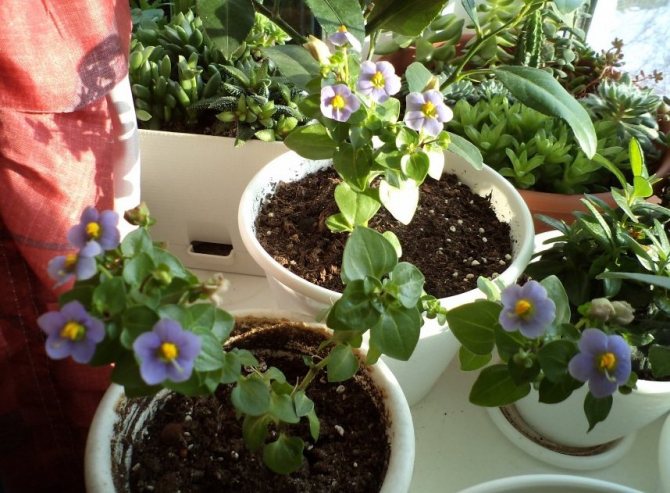

Growing features
Taking care of your exakum at home does not require much effort. Due to the short life cycle, the flowers develop quickly and delight with delicate beauty. It is rarely necessary to transplant exacum. Usually it develops well in a pot with a diameter of 7-10 cm.A layer of clay shards or expanded clay about 3 cm thick is lined at the bottom.
The soil should be chosen light and breathable. Slightly acidic or neutral mixtures of:
- turf land;
- leaf humus;
- peat;
- leafy land;
- sand.
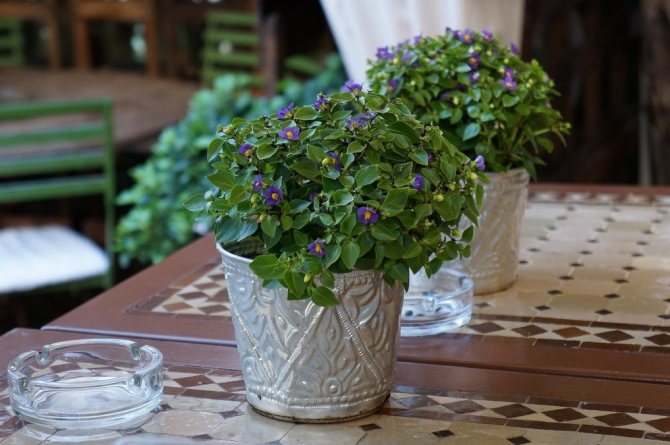

To get a lush bush, you can plant 2-3 seedlings in one pot.
For exakum, bright, sunny places are selected. The abundance of colors directly depends on the illumination. Shoots are not afraid of direct sunlight, but on hot days it is recommended to ventilate the room more often or expose the pot to fresh air. There is no need to shade the bushes. Annual varieties can be planted at the end of May in open ground, where they will be a wonderful decoration for a border or flower bed. It is advisable to select windless places.
The optimum air temperature is + 17… + 20 ° C. There is no need to provide rest or temperature fluctuations. Cooling below +13 ° C leads to the gradual shedding of leaves and death of the plant.
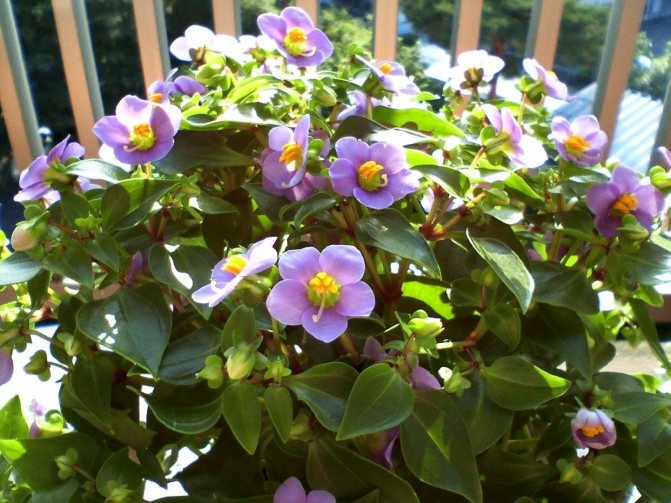

Water the exacum regularly and abundantly so that the soil is always slightly moist. But it is also impossible to flood the substrate, otherwise root rot will develop. For irrigation, use warm, soft water.
The plant prefers humid air, so you need to regularly spray the shoots with a spray bottle. If the house has an aquarium or fountain, it is best to place the pots next to it.
Every 10-14 days, the curtains are watered with a solution of fertilizers for indoor flowers. Use mineral formulations for flowering plants.
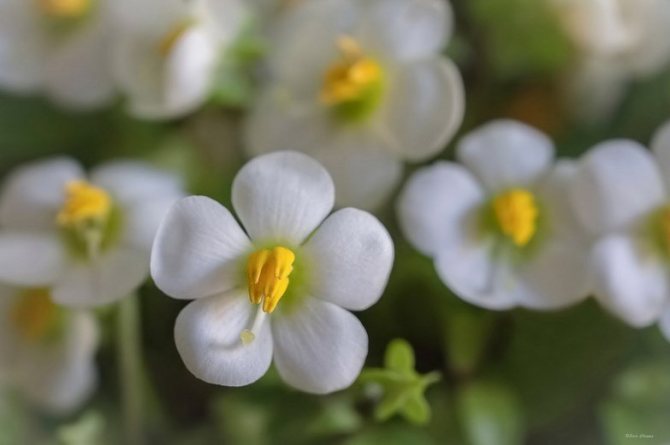

Exacum does not need pruning to form a crown. Its branchy shoots independently take on a spherical shape. To increase attractiveness, you need to remove wilted buds. For the formation of seeds, you should pollinate the flowers with a brush or expose them to fresh air, where insects can freely fly up to the plant.
With proper care, Exacum does not suffer from plant diseases. Its succulent foliage is periodically attacked by spider mites, aphids and felt insects. Most often they appear when the air is too dry. You can get rid of pests with a warm, abundant shower and insecticides.
Exakum a flower that is often sold as "Persian violet" in small flower shops.Indeed, its numerous small flowers are very similar to the flowers loved by all growers, Saintpaulia (uzambara violet). But that's where the similarities end. This plant belongs to the gentian family. In total, there are about 30 types of exacum in nature, but only one of them has taken root in indoor floriculture - the related Exakum. This is a small, bushy plant - a kind of bunch, dotted with flowers - flowers of blue, white or purple against a background of lush green foliage.
Description of the Persian violet (with photo)
The Persian violet is a popular and very beautiful plant, native to most of the rocky areas of Malaysia, as well as South and East Asia. In another way, it is an exacum, more often recognized as a Persian violet or violet. Starting the description, it should be said that this species of the genus of the same name from the Gentian family is a fairly common domestic annual crop grown as an indoor cultivar.
In nature, this is a two-year-old low grass with abundant flowering of purple, blue or purple hues, as you can see from the photo below:
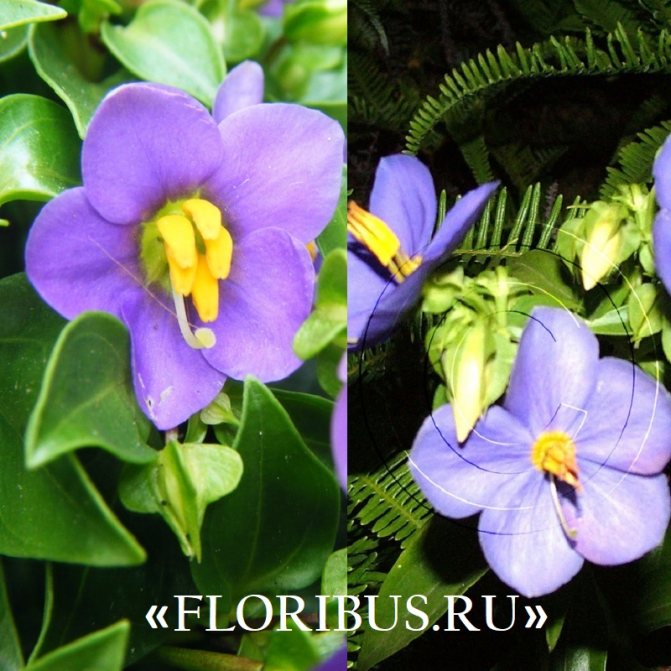

In total, botanists have 30 subspecies of the Persian violet, but as a house plant, only one has become more widespread - related exacum. At home, the flower is a low herbaceous shrub with strong erect stems up to 30 cm long. Smooth dark green leaves resembling an egg or heart are located opposite them. Leaves on the edges that are slightly curved outward have a lighter shade. The fleshy foliage creates a powerful green cushion. In length, one sheet of exacum can reach 4 cm, being located on a short strong petiole, together with others, forms a juicy green tops, adding even more decorative effect to a dense bush.
See what a Persian violet looks like in the photo, illustrating the possibilities of decorating the crown of a bush in a pot culture:
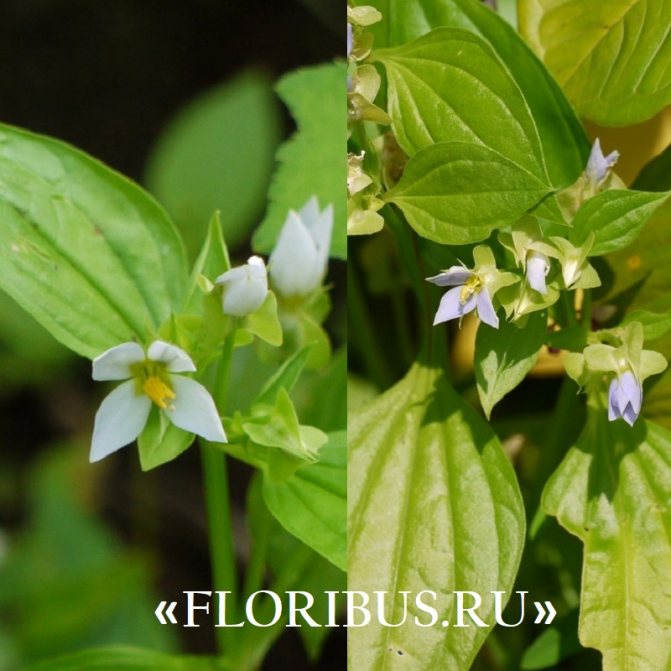

Varieties and types
Exakum Blue Star - is a compact shrub with dense dark green leaves. The size of the plant stems reaches 30 centimeters. This variety has been grown for two years, then it needs updating. The Persian violet has blue, star-like flowers that give it its name.
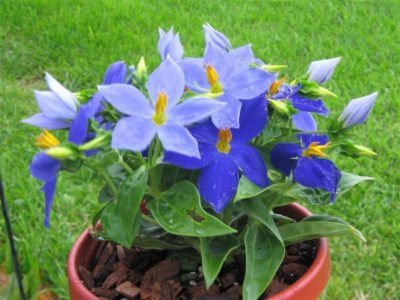

Exakum Sapphire - the plant has opposite, juicy, erect, paired leaves of a dark green hue, located close to each other. They are stiff and resilient. The length of the leaf plates reaches 4 centimeters. Flowers are solitary, with rounded petals of a dark blue hue. The core of the flower has a bright yellow hue and rises noticeably above the petals.
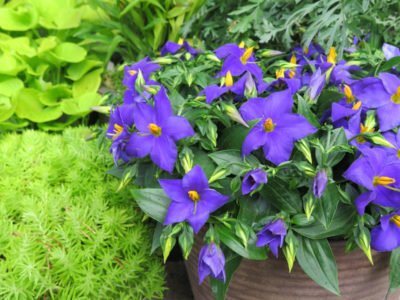

Exakum related - is a biennial plant, reaching a height of up to 30 centimeters. The flowers are blue or lilac with a yellow, protruding core. There are varieties of this variety with blue and white double inflorescences.
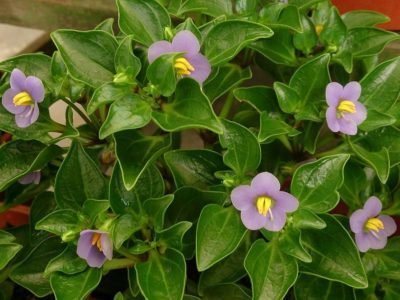

Ekzakum blue eyes - Persian violet of this variety has a dark green luxurious foliage, on which are scattered blue small flowers with rounded petals, crowned with a yellow, convex core. The flowers have a delicate and fresh scent reminiscent of a night violet.
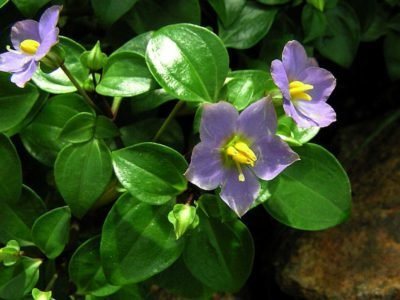

Exakum blue dwarf
This variety of Persian violet has an original shape of blue flowers, a lush crown and large vein leaf plates. It is often used to create unusual flower arrangements.
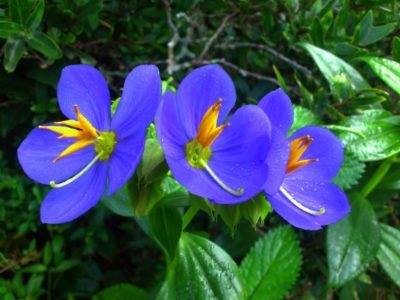

Exakum white star - is a low, bushy plant with triangular-oval leaf plates with many white flowers. The flowering time of the Persian violet is 6 to 8 weeks. Despite the fact that exacum is considered a biennial, it is grown indoors as an annual.
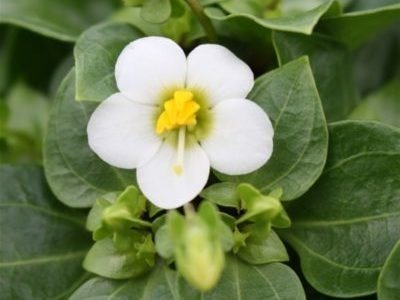

Exakum the white gnome - is a small, neat plant that strikes with an abundance of flowering.Persian violet has heart-shaped, smooth, shiny dark green leaves with clear veins. Exakum of this variety has white five-petal inflorescences with a yellow center. The flowering period of the plant begins in mid-summer and ends in late autumn.
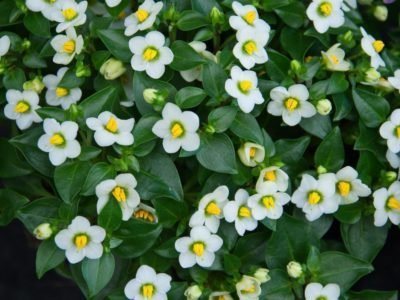

Exakum three-core - the plant is large. Its height reaches 50 centimeters. The Persian violet has an erect, branched stem with ovoid, dark green petals. Exakum flowers have a blue tint with a yellow core. The plant is frost-resistant. His homeland is Sri Lanka.
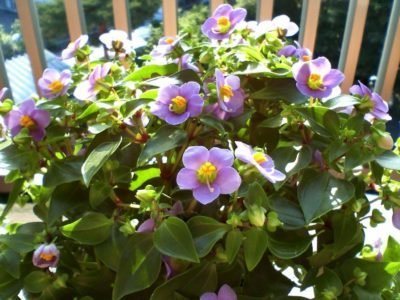

Exakum growing from seeds
It is best to sow seeds in the fall. They should not be embedded in the substrate, just spread over its surface. After that, the container with seeds must be covered with glass or foil and moved to a warm place. The shelter must be removed from time to time so that the seeds are aired.
10 days after planting, the seeds begin to sprout. Young plants are separated and planted in separate containers. The Persian violet begins to bloom in six months.
